Bucket gardening transforms limited areas like balconies, patios, and small yards into productive green spaces. Using simple containers, anyone can cultivate a variety of plants, from fresh vegetables and herbs to vibrant flowers. This approach is not only space-efficient but also allows for better control over soil quality, watering, and pest management. For those with poor native soil or physical limitations, gardening in buckets brings the joy of growing your own food and beautiful blooms within easy reach. It’s an accessible, affordable, and highly creative way to connect with nature, no matter how small your space.
1. Vertical Herb Garden Bucket Tower
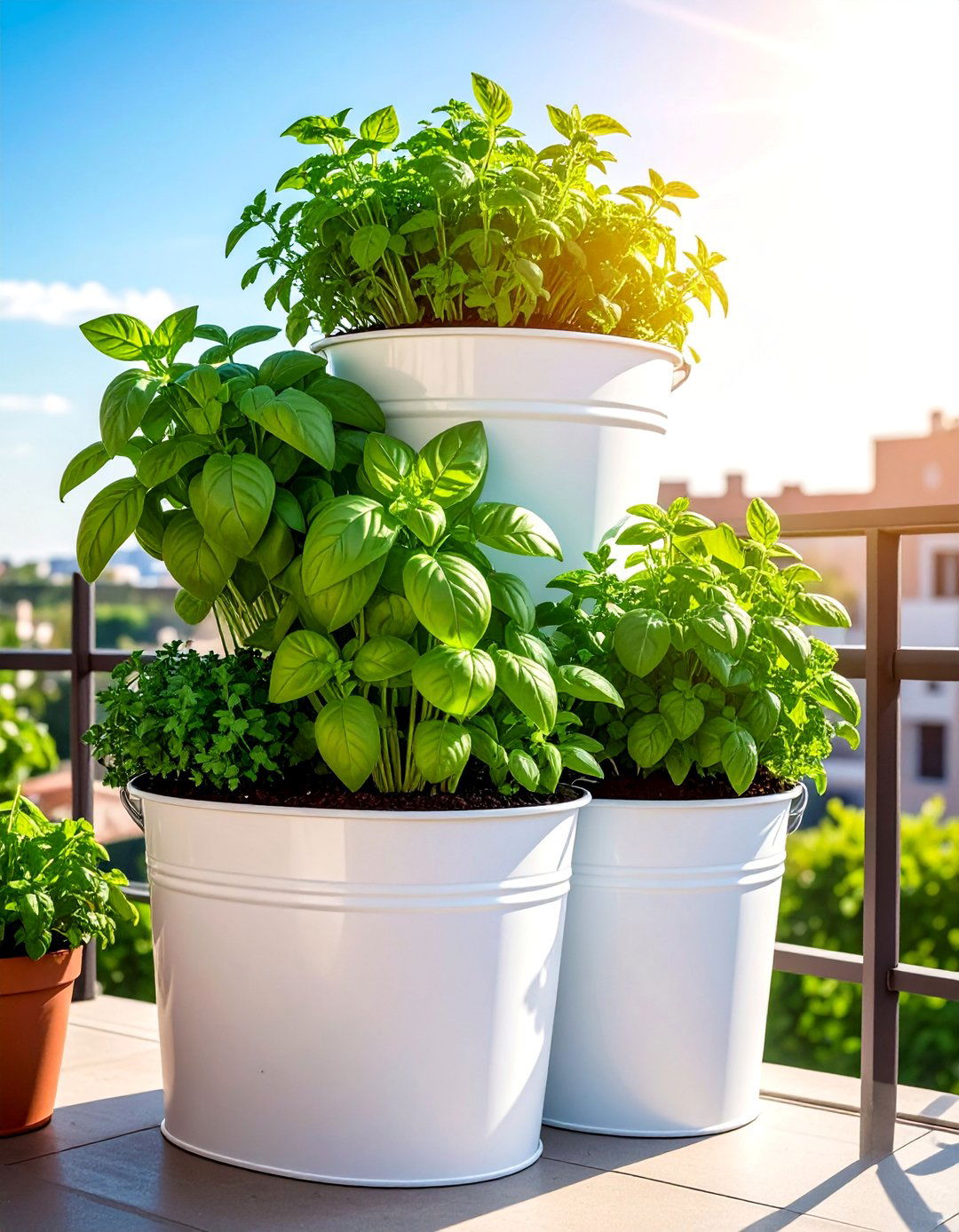
A vertical herb garden bucket tower maximizes growing space by stacking containers upwards. This design is perfect for balconies or small patios where floor space is at a premium. By drilling a central hole through several 5-gallon buckets and running a sturdy post or rebar through them, you can create a stable, multi-level planter. Each bucket can house a different herb, such as basil, mint, parsley, and rosemary, keeping them organized and easily accessible for cooking. Staggering the buckets slightly allows for better sunlight exposure for each plant, ensuring they all thrive and provide a continuous, fresh supply for your kitchen.
2. Upside-Down Tomato Bucket Planter
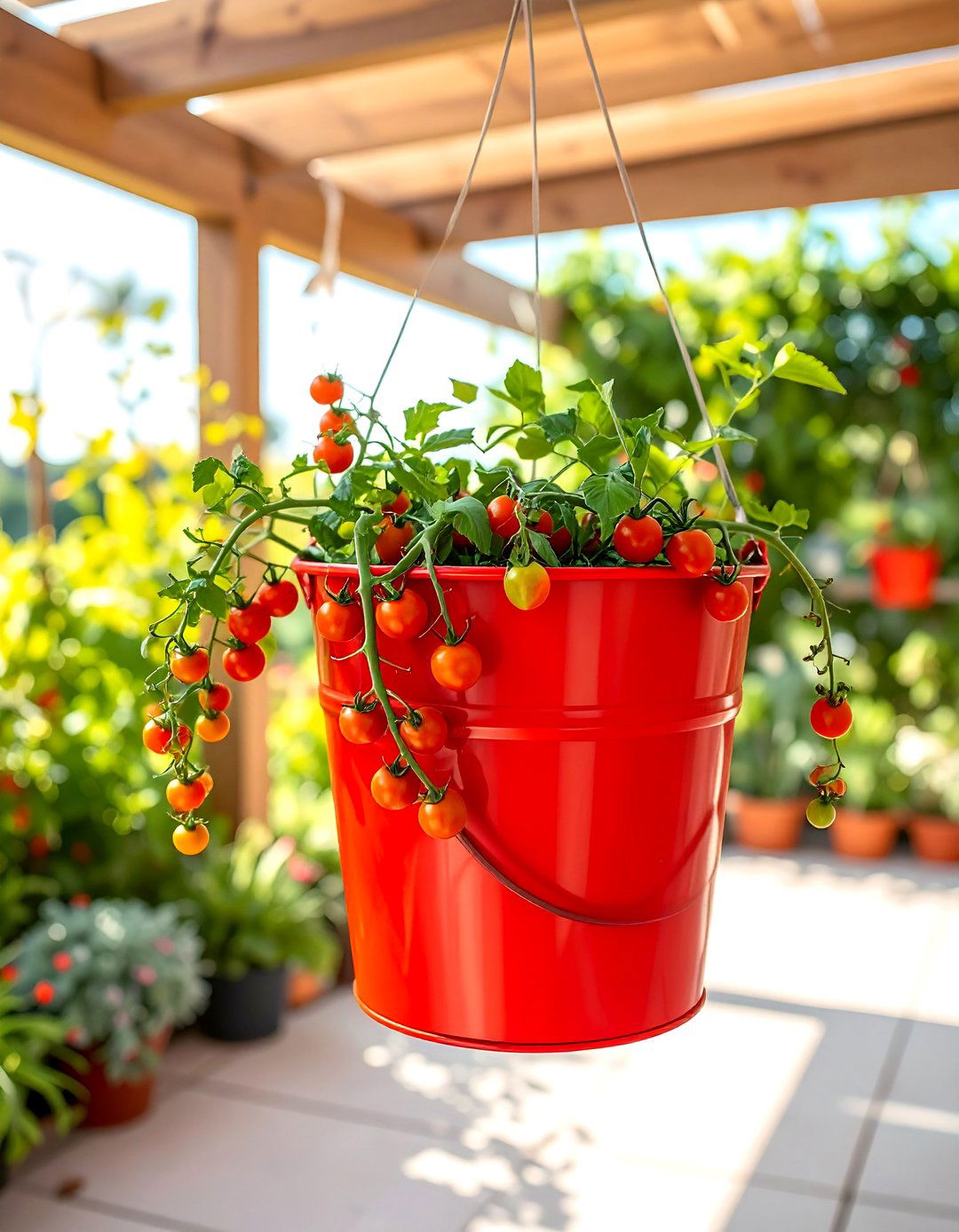
Growing tomatoes upside down is a clever technique that saves space and can lead to healthier plants. This method involves planting a tomato seedling through a hole cut in the bottom of a 5-gallon bucket and hanging the entire container. Gravity helps deliver water and nutrients directly to the roots, while keeping the fruit and foliage off the ground reduces the risk of soil-borne pests and diseases. This approach also eliminates the need for staking or caging, making it ideal for patios, balconies, or any area with a sturdy overhead support. The top of the bucket can even be used to grow herbs.
3. Self-Watering Wicking Bucket System
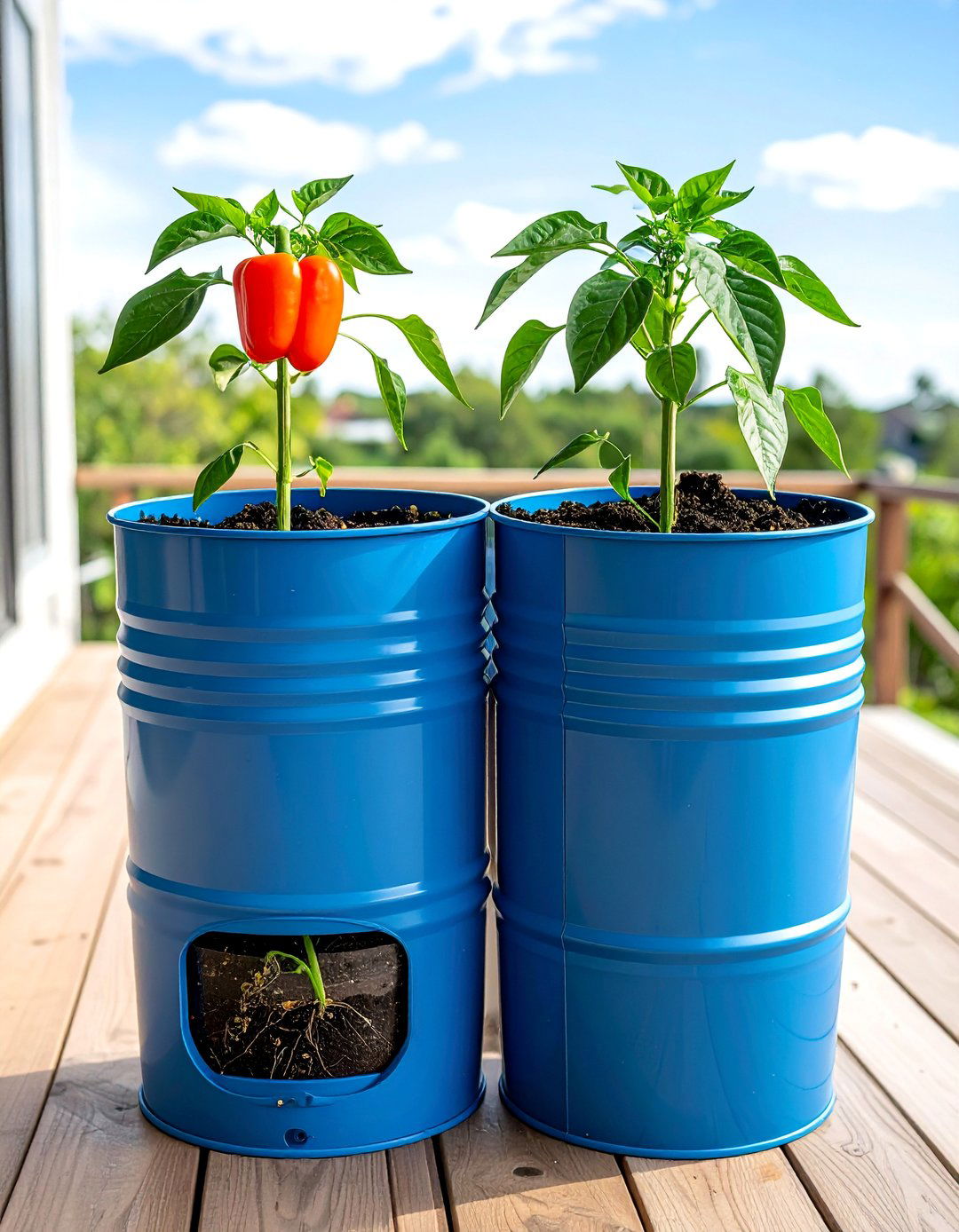
A self-watering wicking bucket system is a low-maintenance solution for busy gardeners. This design uses two buckets, one nested inside the other. The inner bucket holds the soil and plant, while the outer bucket serves as a water reservoir. A wicking medium, such as a strip of fabric or a perforated PVC pipe filled with soil, draws water from the reservoir up into the soil as needed. This provides a consistent moisture supply directly to the plant's roots, preventing both overwatering and underwatering. It’s an excellent choice for thirsty plants like tomatoes and peppers, ensuring they stay hydrated even during hot weather.
4. Cascading Flower Bucket for Balconies
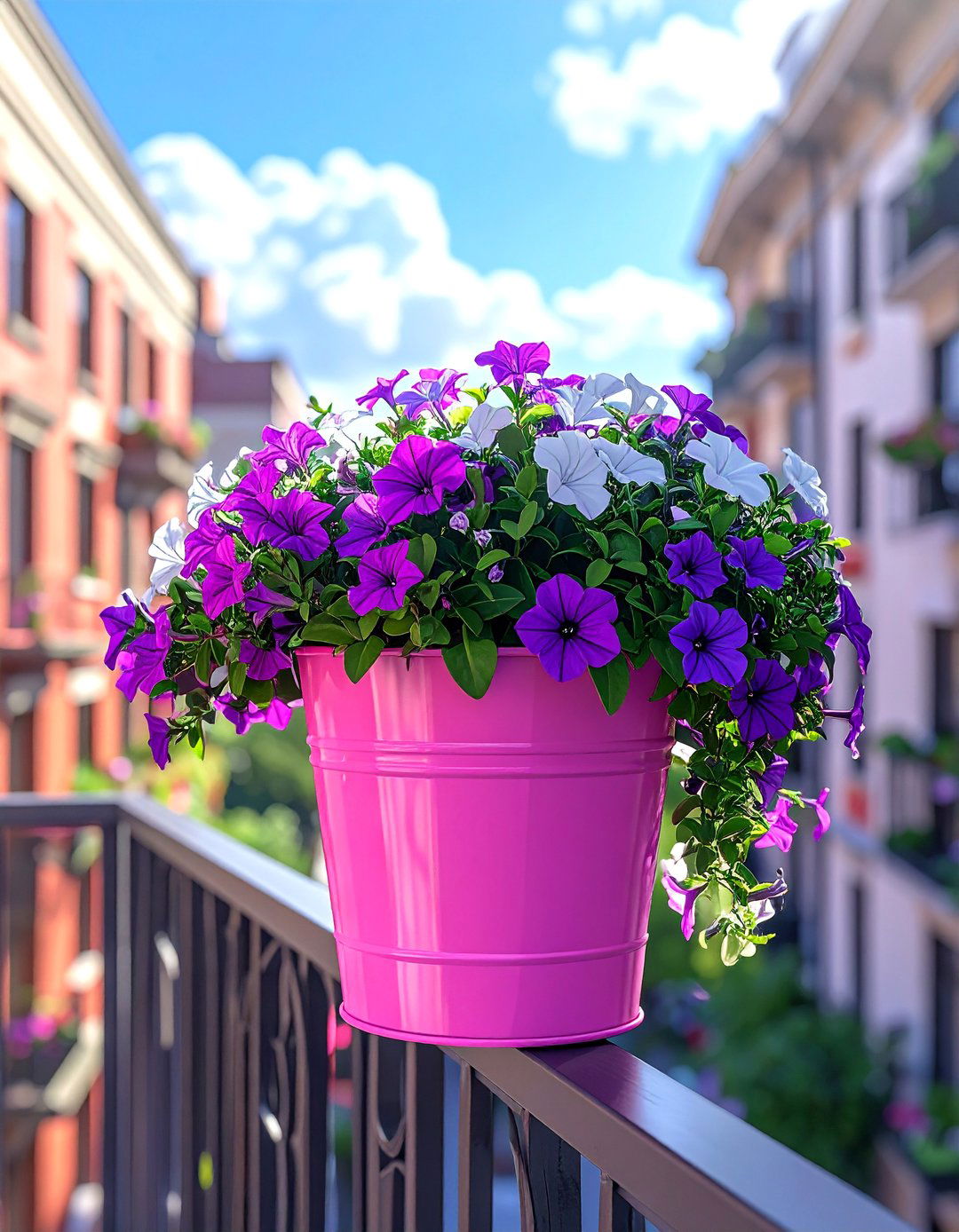
Transform a plain balcony railing into a stunning floral display with a cascading flower bucket. By choosing trailing plants like petunias, ivy geraniums, or calibrachoa, you can create a waterfall of vibrant color that spills over the sides of the container. Use a standard 5-gallon bucket and drill drainage holes before filling it with high-quality potting mix. Attaching the bucket securely to the railing using heavy-duty brackets is crucial. This idea not only adds immense visual appeal to your outdoor space but also utilizes vertical areas that are often overlooked, bringing life and beauty to even the most compact urban environments.
5. Potato Grow Bucket with Harvest Doors
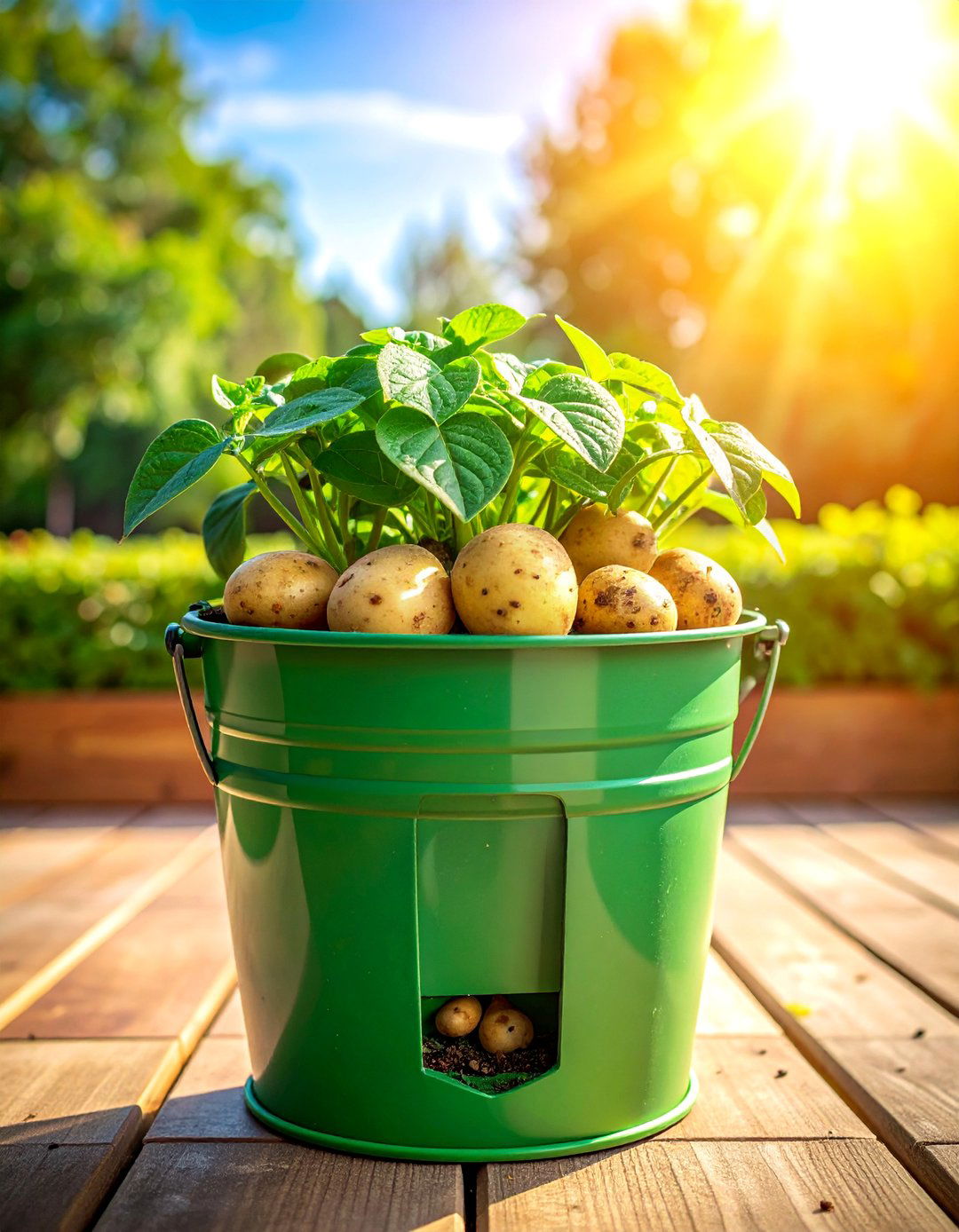
Growing potatoes in buckets is incredibly simple and rewarding, especially with a DIY harvest door. Take a 5-gallon bucket and cut a small flap or window near the bottom. Secure the flap with duct tape to create a simple door. As the potato plant grows, you can periodically open the door to check on the developing tubers and harvest new potatoes without disturbing the entire plant. This method allows for a continuous harvest throughout the growing season. It’s a fantastic way to enjoy fresh, homegrown potatoes and provides a fun, educational experience for gardeners of all ages in a very small footprint.
6. Trellised Bucket for Climbing Vegetables
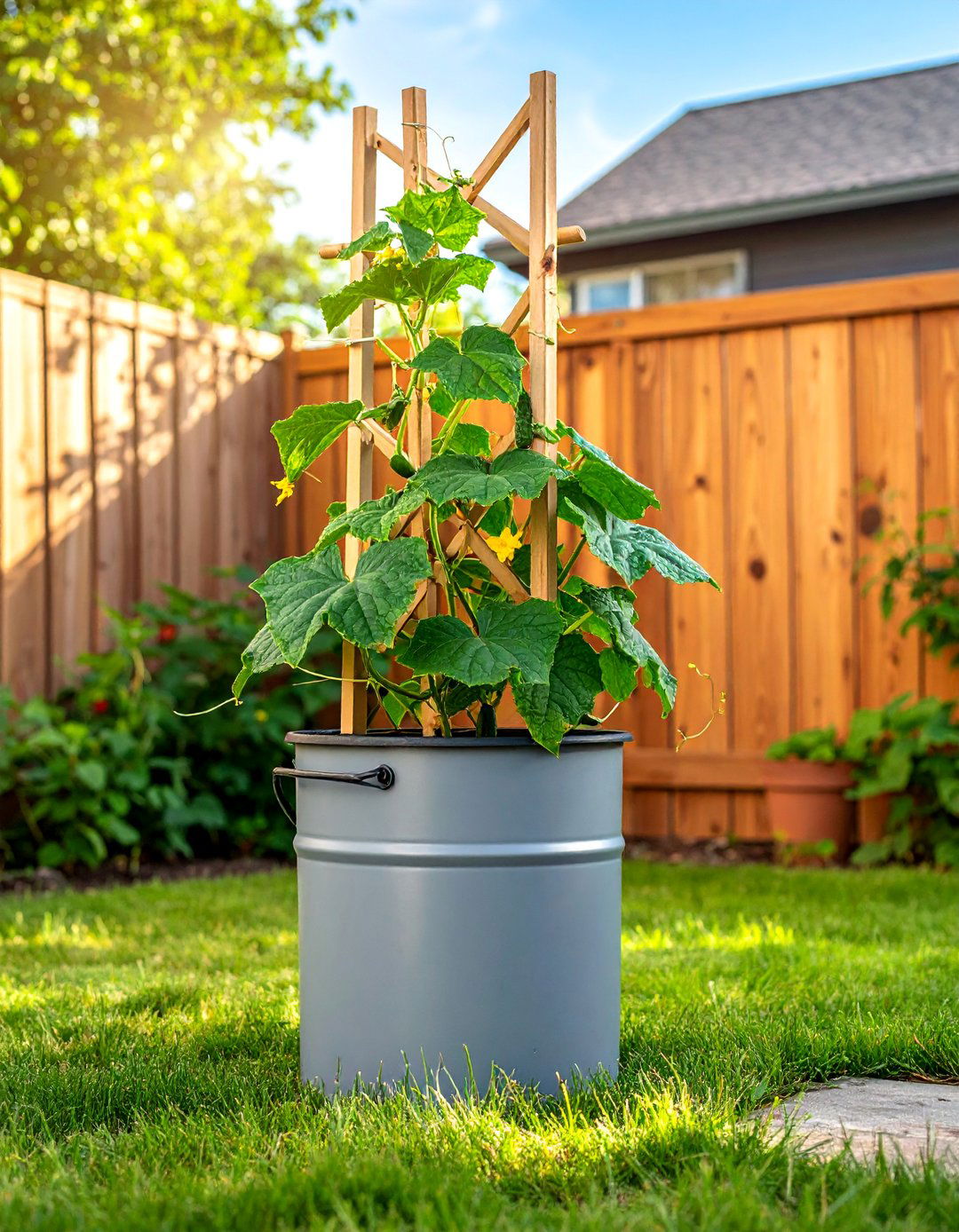
For vining plants like cucumbers, peas, and pole beans, a trellised bucket is an essential space-saving solution. Start with a sturdy 5-gallon bucket and insert a small trellis, bamboo stakes, or a wire cage directly into the soil. As the plant grows, train its vines to climb the support structure. This vertical approach keeps the fruit and foliage off the ground, promoting better air circulation and reducing the risk of disease. It also makes harvesting much easier and keeps your small garden tidy and organized. This method allows you to grow productive climbing vegetables in a minimal amount of horizontal space.
7. Colorful Painted Bucket Garden for Kids
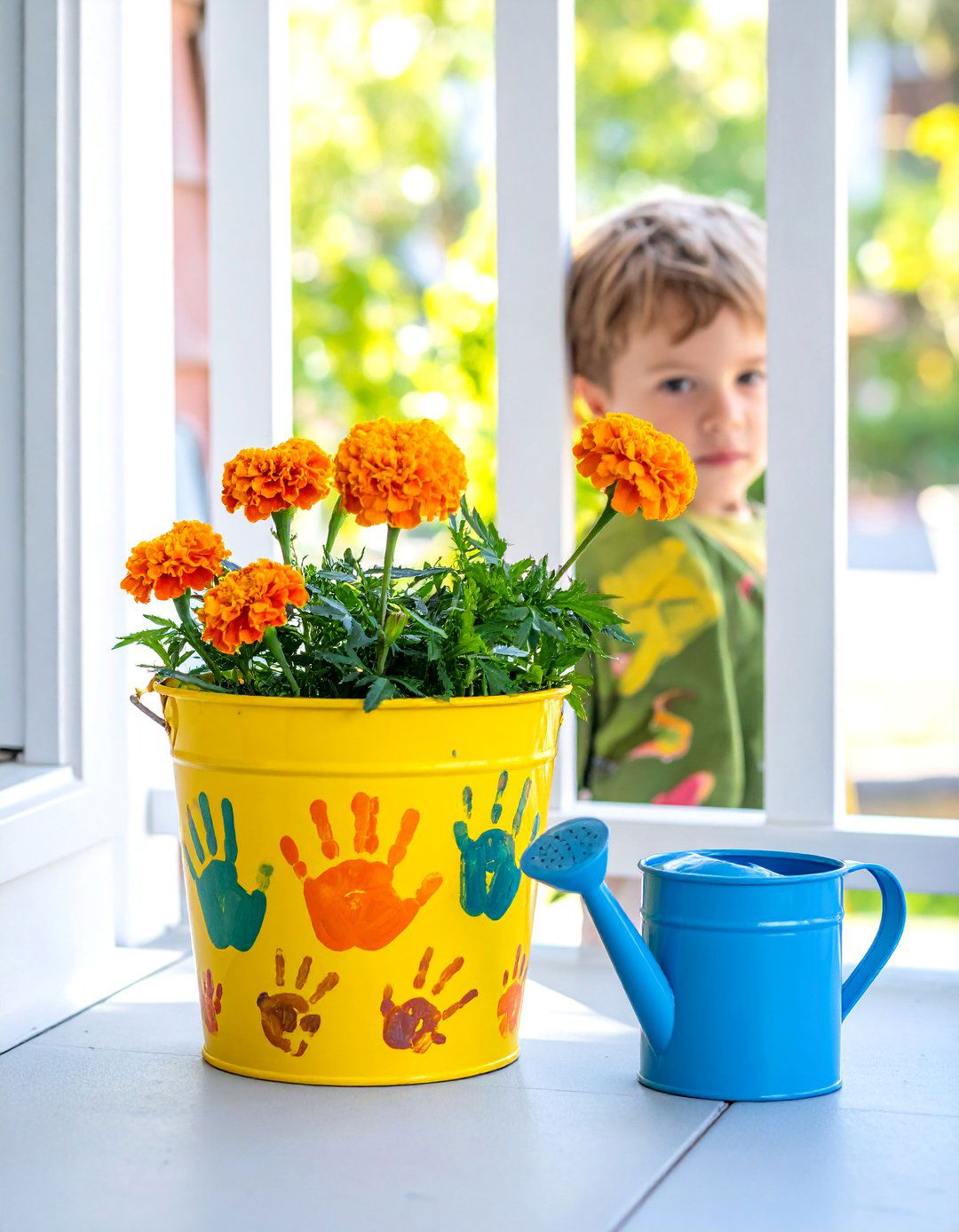
Engage children in gardening with a fun and creative painted bucket project. Let them decorate their own 5-gallon buckets with bright, non-toxic paints, turning simple containers into personalized works of art. This activity not only adds a splash of color and personality to your garden space but also gives kids a sense of ownership over their plants. They can grow easy-to-care-for options like cherry tomatoes, strawberries, or marigolds. This hands-on experience teaches them about plant life cycles and the rewards of nurturing something from seed to harvest, making it a wonderful educational and bonding activity for the whole family.
8. Root Vegetable Bucket Garden
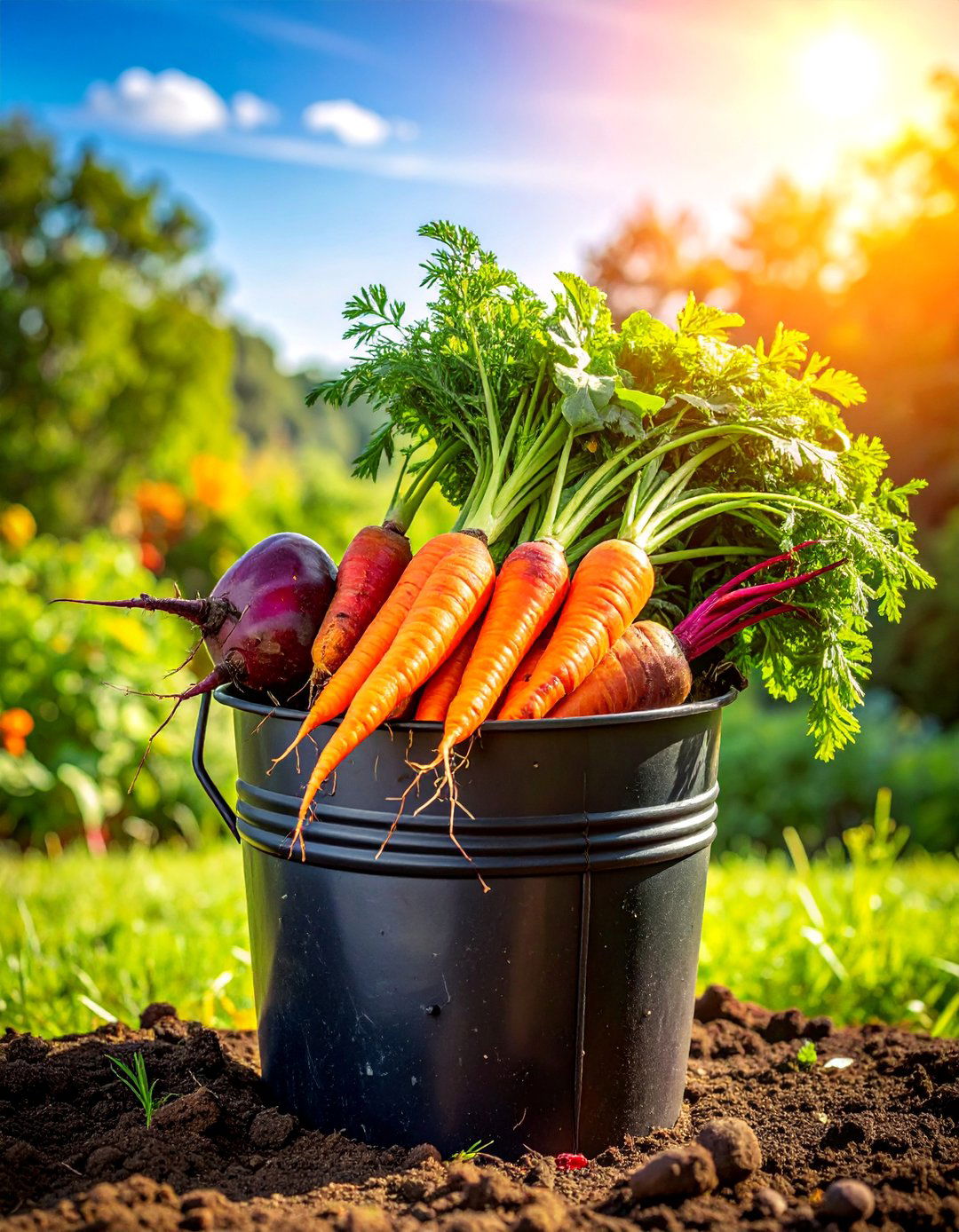
Deep root vegetables like carrots, parsnips, and beets can be successfully grown in 5-gallon buckets. The depth of the container provides ample space for the roots to develop fully without being constrained by compacted or rocky garden soil. It’s essential to use a loose, well-draining potting mix to allow the roots to grow straight and strong. Ensure the buckets have adequate drainage holes to prevent waterlogging, which can cause the roots to rot. This method gives you complete control over the soil environment, making it possible to harvest perfectly formed root vegetables even if your backyard soil isn't suitable.
9. Cut-and-Come-Again Salad Greens Bucket
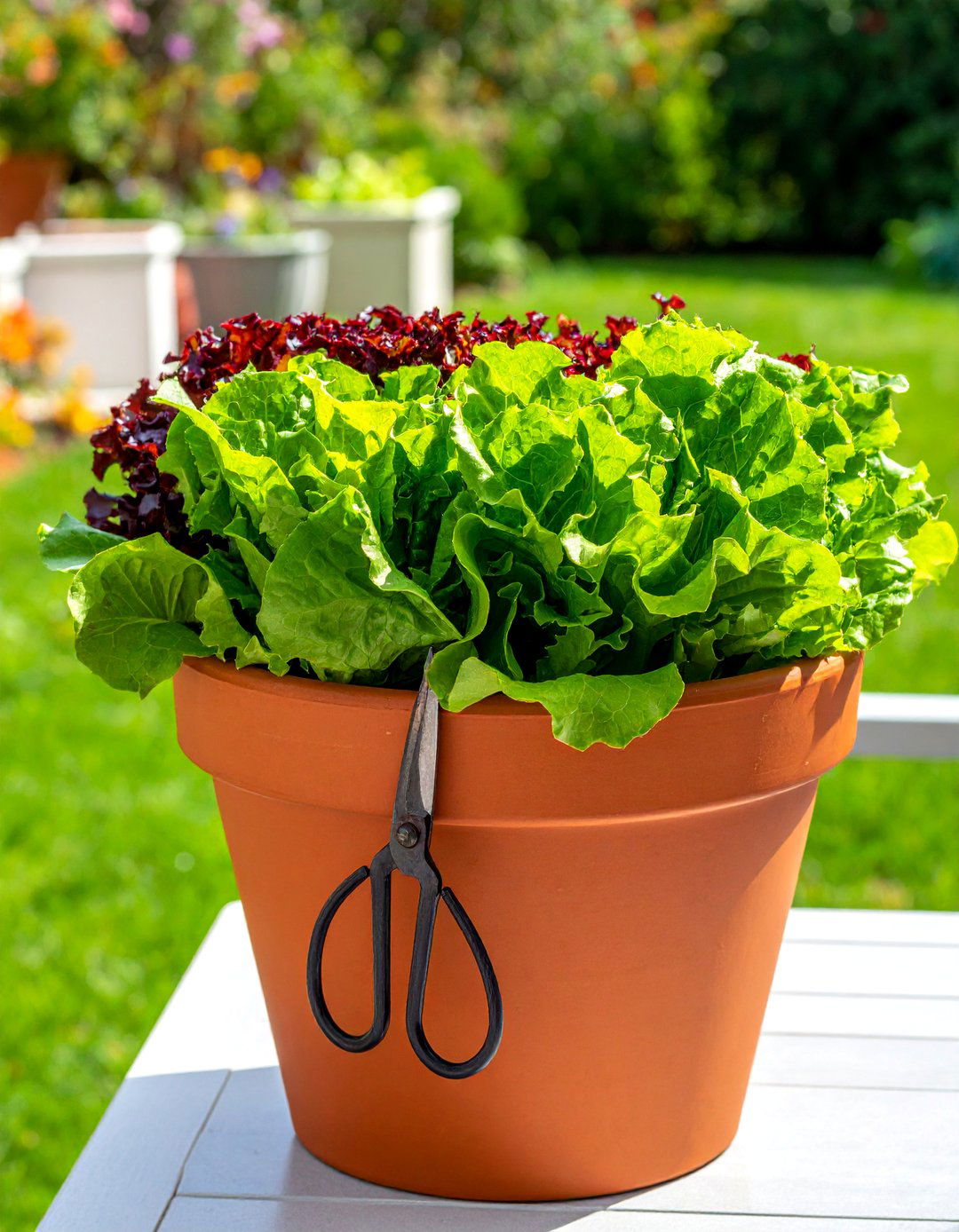
Enjoy a continuous supply of fresh salads by creating a cut-and-come-again greens bucket. This technique involves growing loose-leaf lettuce, spinach, arugula, and other leafy greens that can be harvested multiple times. Plant your seeds in a wide, 5-gallon bucket filled with rich potting soil. When the outer leaves reach a usable size, simply snip them off with scissors, leaving the central growing point intact. The plant will continue to produce new leaves for several weeks, providing a steady stream of fresh greens for your meals. This is an efficient and economical way to grow your own salad ingredients in a very small space.
10. Blueberry Bush in a Bucket
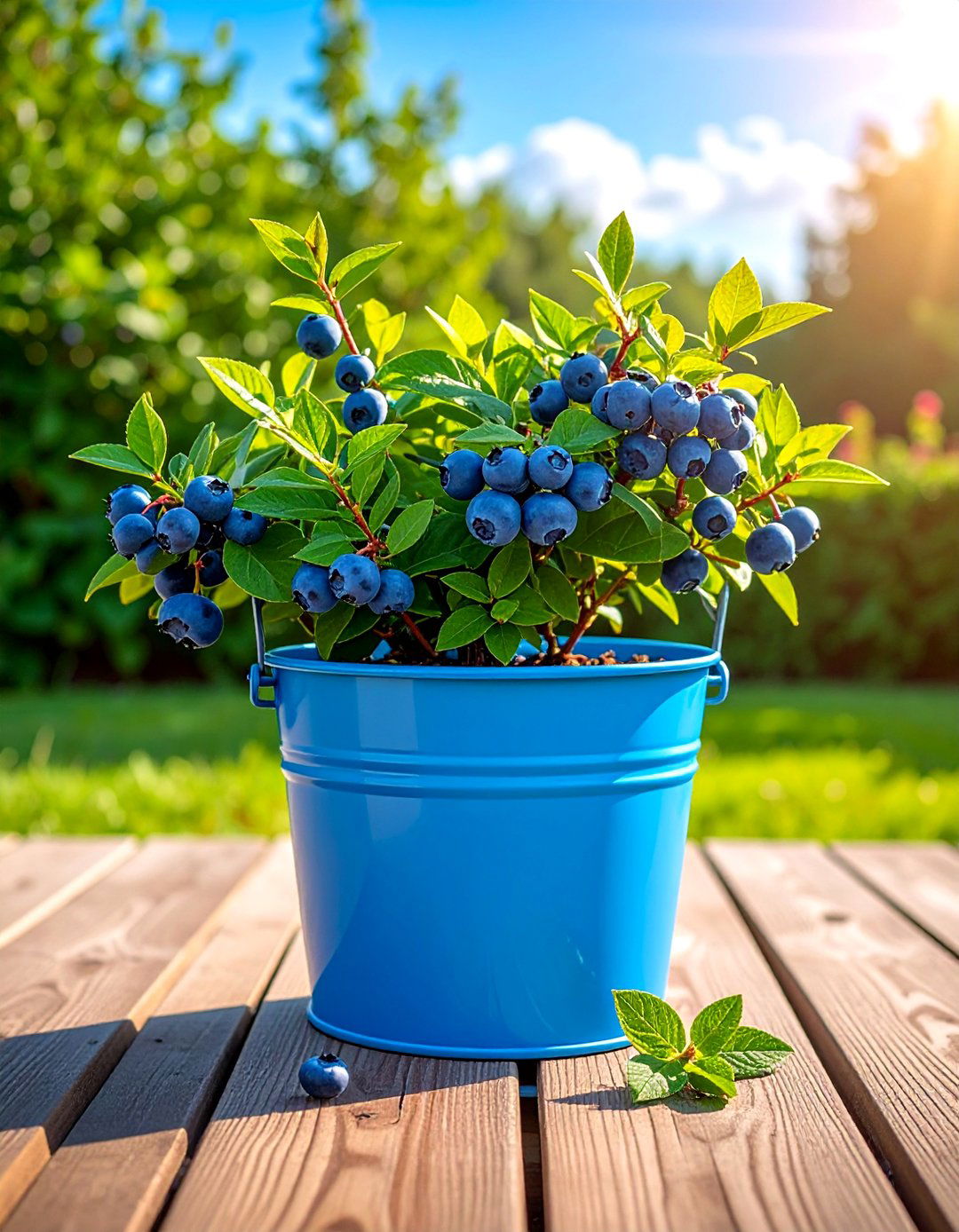
Growing blueberry bushes in containers is an excellent option, especially for gardeners with non-acidic soil. Blueberries thrive in acidic conditions, which can be easily created and maintained in a 5-gallon bucket. Use a potting mix specifically formulated for acid-loving plants, or amend regular potting soil with sulfur or pine bark. Planting a blueberry bush in a bucket also allows you to move it to find the perfect sunny spot and protect it from harsh weather. Choose a compact or dwarf variety suited for container life to ensure a healthy plant and a delicious harvest of fresh berries.
11. Companion Planting Bucket Duo
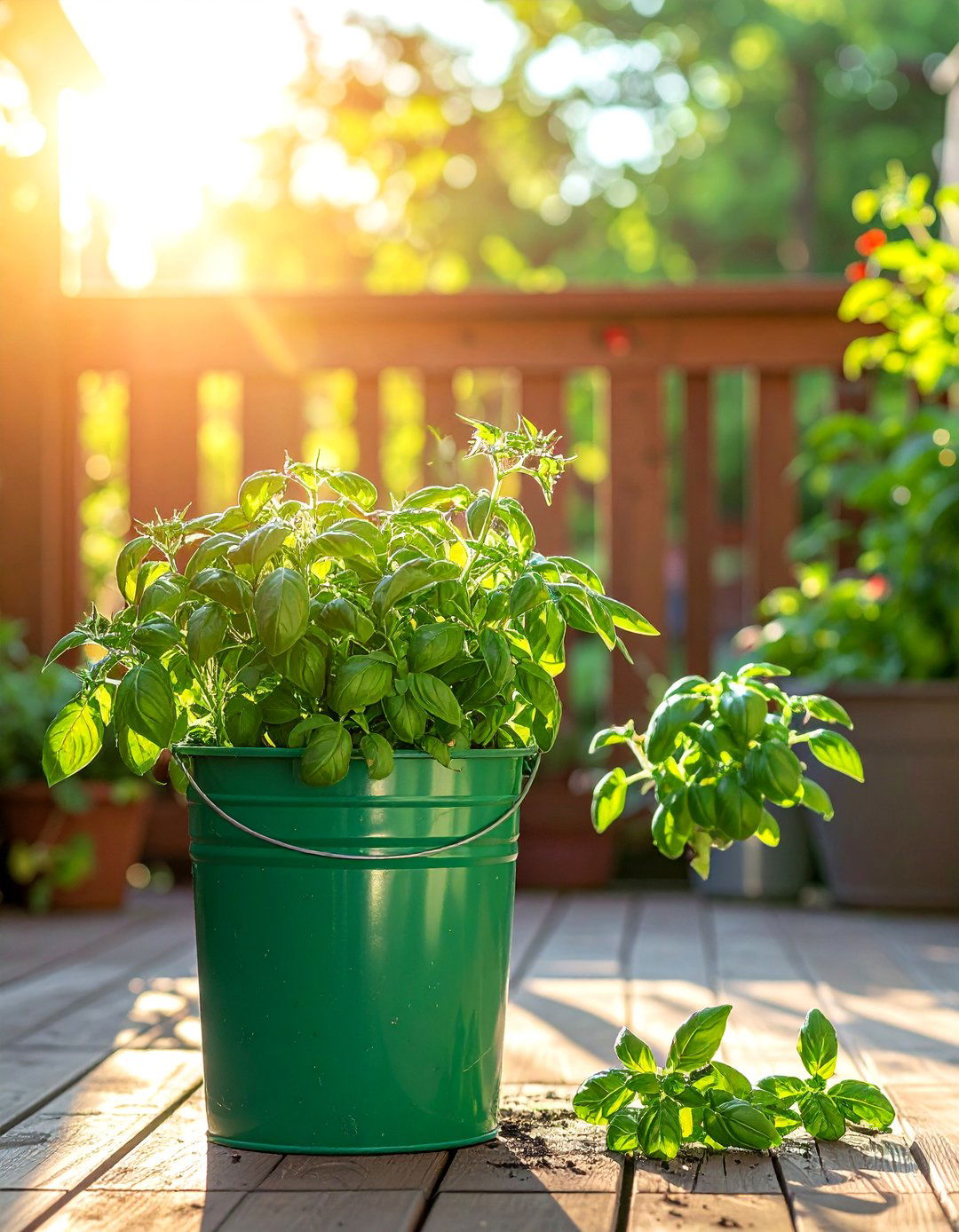
Maximize health and yield in a small space by using companion planting in a bucket duo. This involves planting two or more mutually beneficial plants together in the same container. A classic combination is tomatoes and basil; the basil is known to repel tomato hornworms and is said to improve the tomato's flavor. Another great pairing is marigolds and peppers, as marigolds deter nematodes and other pests. By choosing compatible plants for your 5-gallon bucket, you can create a small, self-sustaining ecosystem that naturally manages pests and improves the overall productivity of your compact garden.
12. Strawberry Bucket with Side Pockets
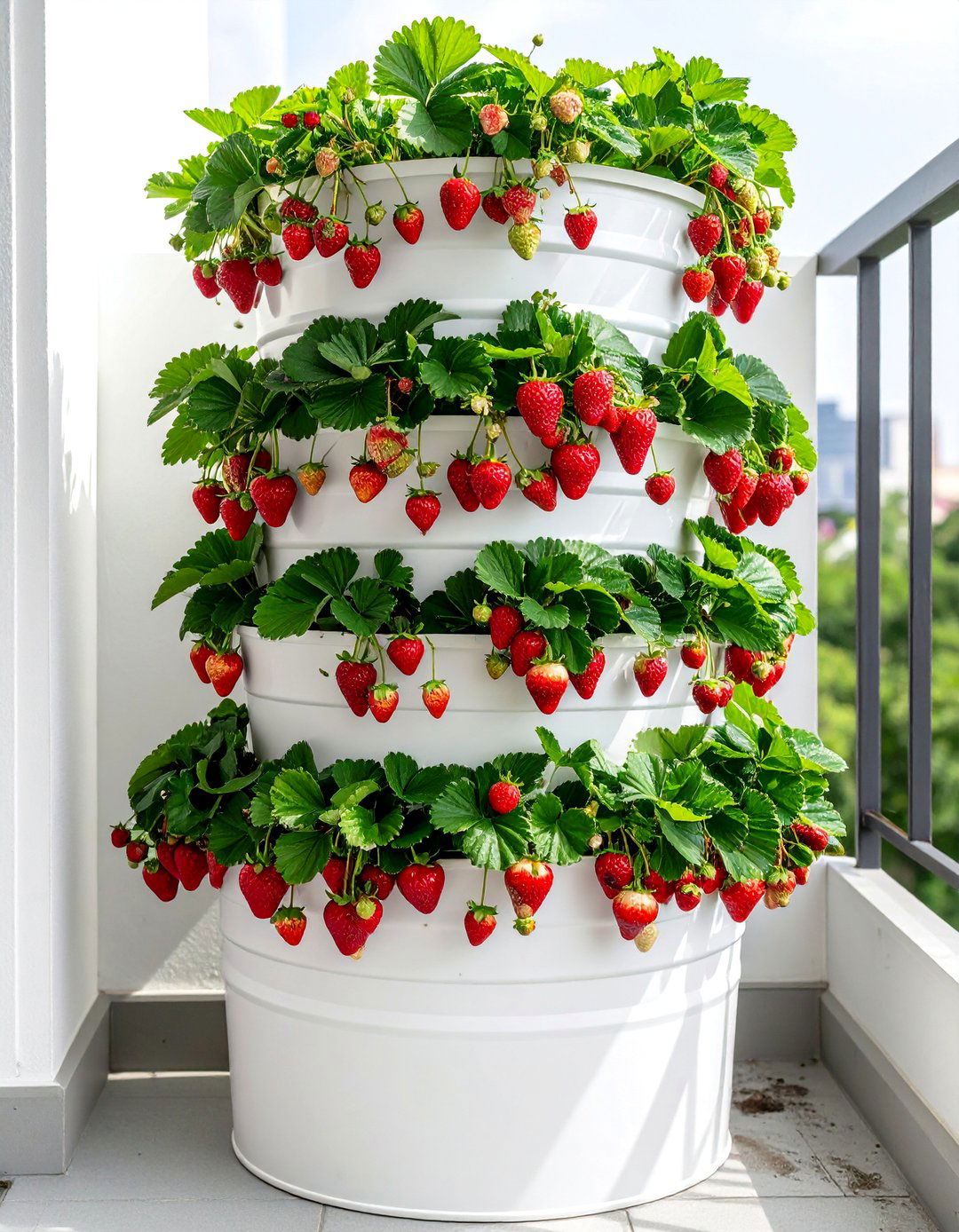
A strawberry bucket with side planting pockets is a highly efficient way to grow a large number of plants vertically. You can purchase a pre-made strawberry pot or create your own by cutting circular holes along the sides of a 5-gallon bucket. Plant individual strawberry plants in each pocket and a few more on top. As the plants grow, they will produce runners and fruit that cascade down the sides, making harvesting easy and keeping the delicate berries off the soil. This method not only saves a significant amount of space but also creates an attractive and productive tower of fresh, delicious strawberries.
13. Kitchen Scrap Regrowth Bucket
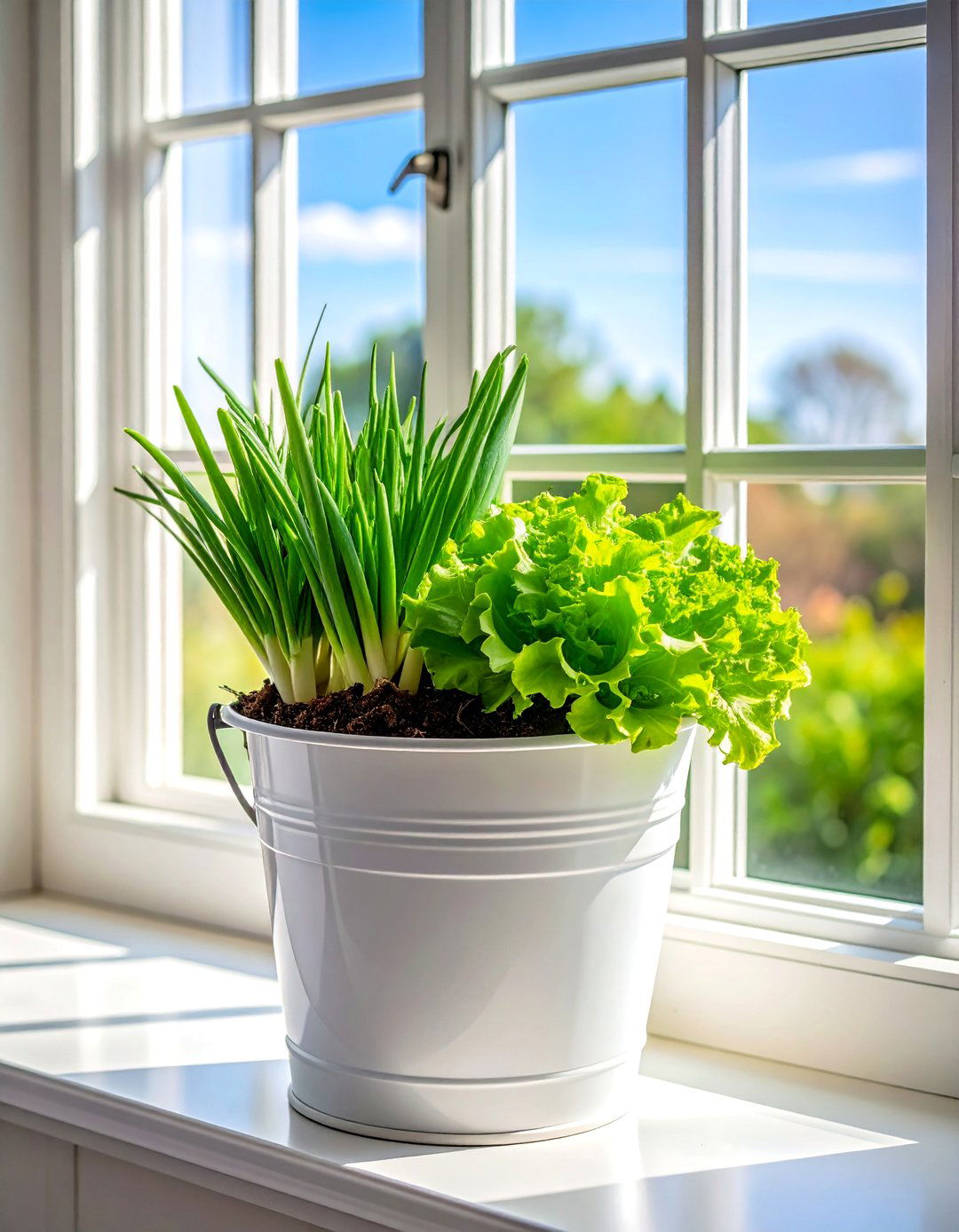
Reduce food waste and grow fresh produce for free with a kitchen scrap regrowth bucket. Many common vegetable scraps, such as the bases of lettuce heads, celery, and green onions, can be regrown in soil. Place these scraps in a 5-gallon bucket filled with moist potting mix, ensuring the root end is in contact with the soil. Within a few weeks, new growth will emerge, providing a supplemental harvest. This simple project is a fantastic way to demonstrate the resilience of plants and teach the principles of sustainability, turning what would have been compost into fresh, edible greens.
14. Aromatic Edible Flower Bucket
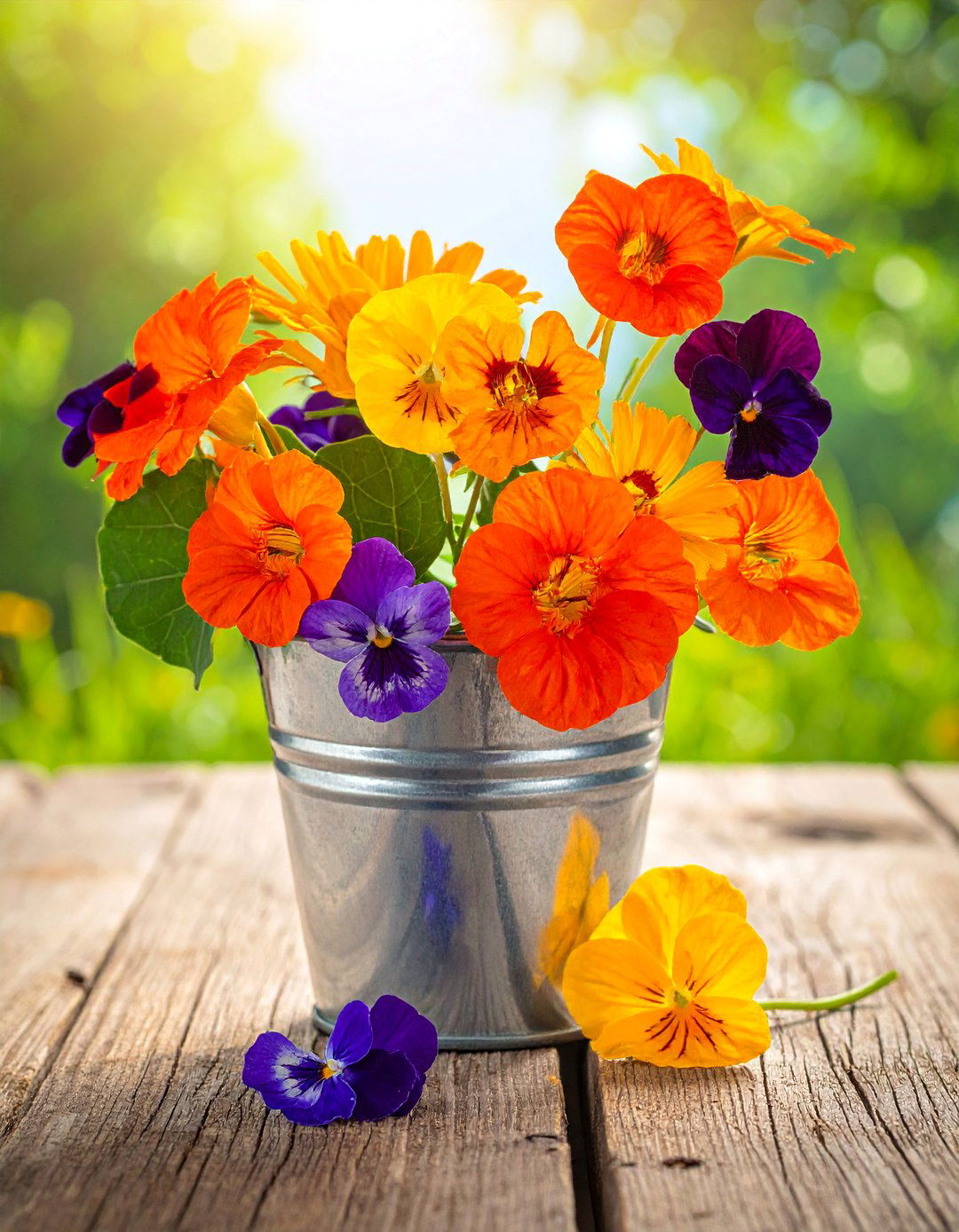
Elevate your culinary creations by growing a bucket of beautiful and flavorful edible flowers. Varieties like nasturtiums, calendula, pansies, and violas are easy to grow in containers and add a touch of elegance to salads, desserts, and drinks. Fill a 5-gallon bucket with a well-draining potting mix and plant a mix of these flowers for a colorful and aromatic display. Not only will you have a stunning floral arrangement for your patio or balcony, but you'll also have a ready supply of unique garnishes to impress your guests. Be sure to choose flowers that are safe for consumption.
15. Hanging Bucket Garden on a Fence
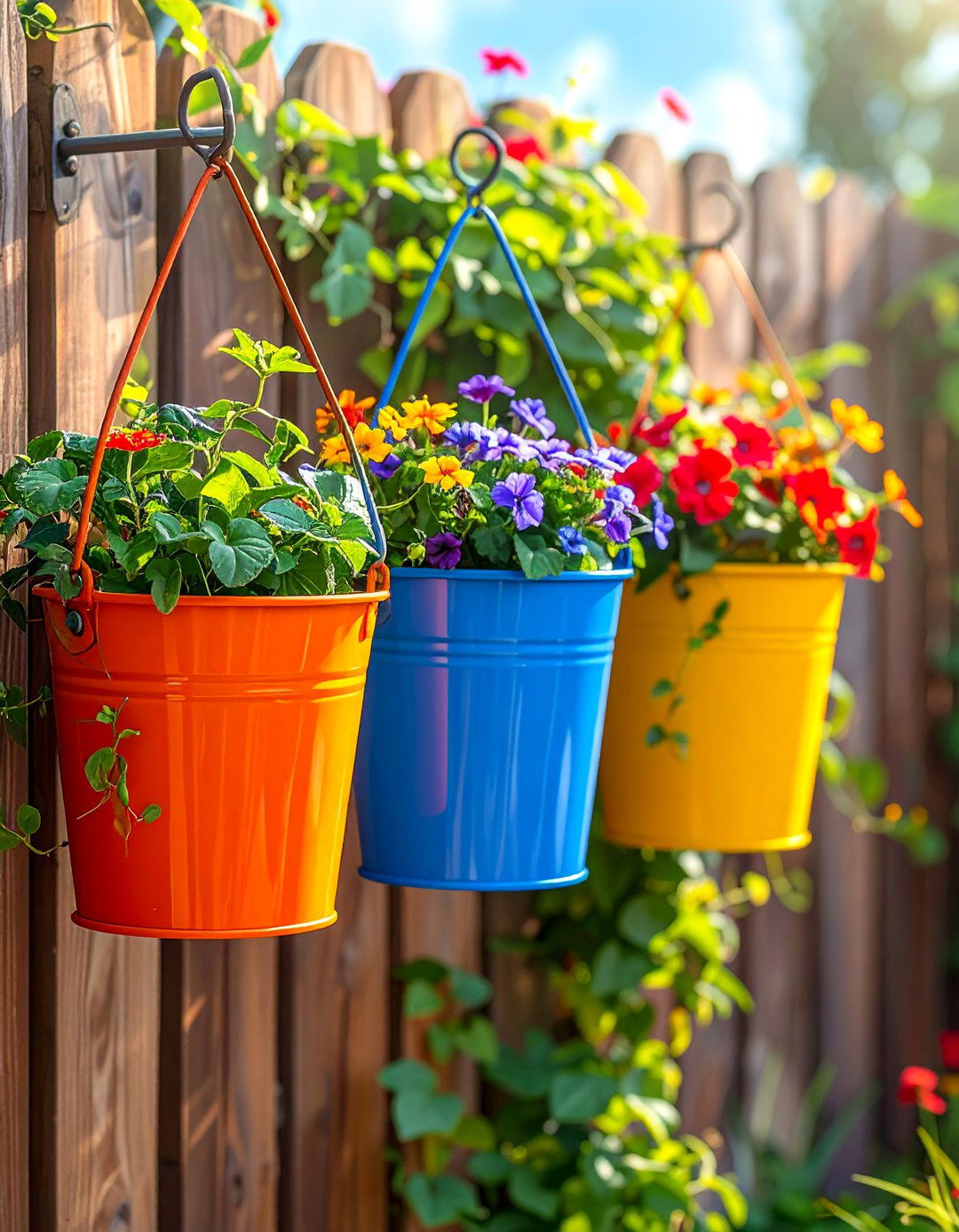
Utilize vertical fence space by creating a hanging bucket garden. This is an ideal solution for yards with limited ground area or for adding a decorative green wall. Use sturdy S-hooks and heavy-duty brackets to securely hang 5-gallon buckets along a fence or wall. You can plant a variety of things, from trailing flowers like verbena to herbs and even compact vegetables like bush beans or dwarf tomatoes. Painting the buckets in coordinating colors can turn a plain fence into a vibrant and productive focal point, effectively expanding your gardening area without taking up any valuable patio or lawn space.
16. Multi-Variety Pepper Bucket
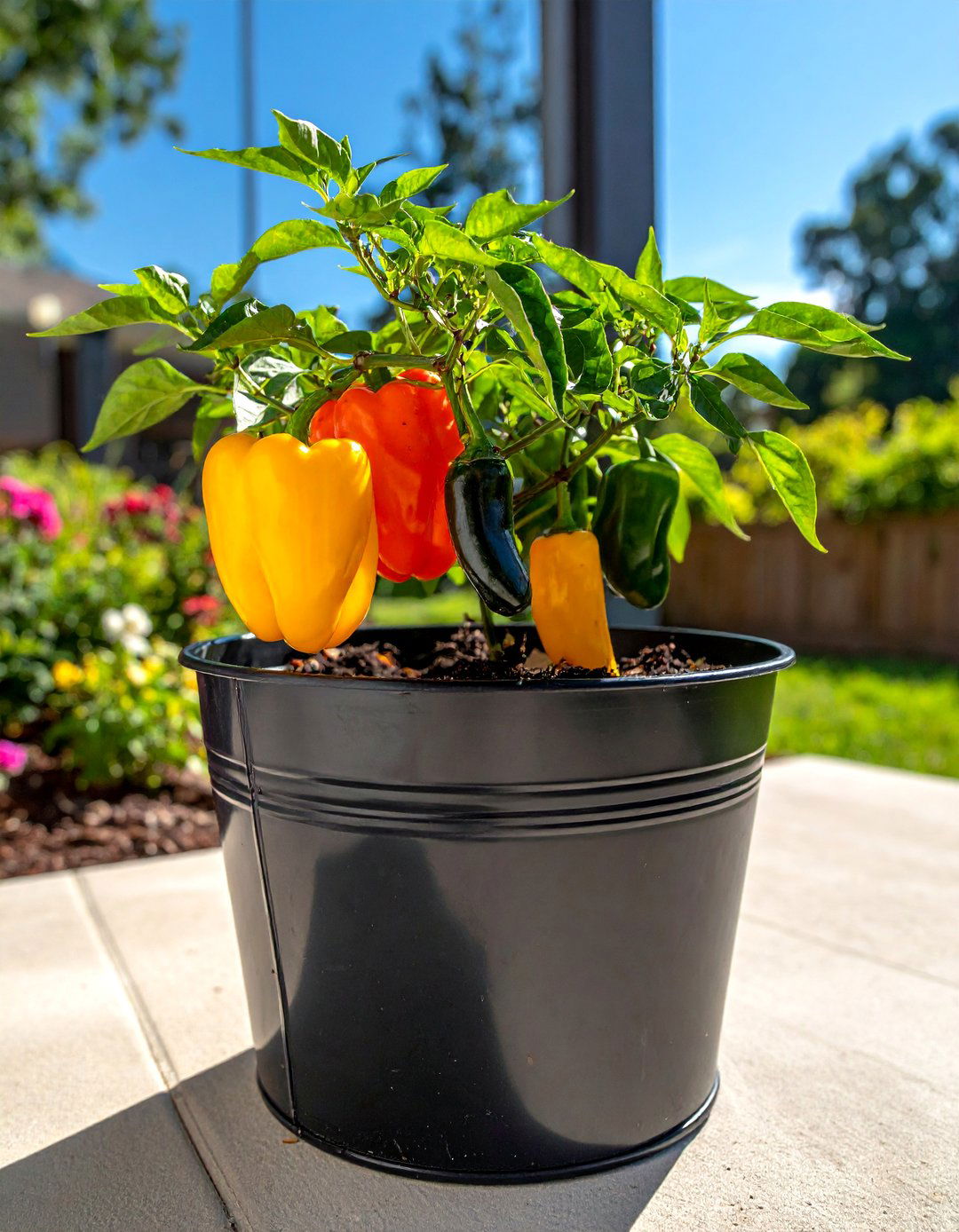
Grow a diverse selection of peppers in a single bucket for a compact and spicy garden. Choose a large container, at least 5 gallons, to give the roots of multiple plants enough space. You can plant three to four different pepper varieties, such as a jalapeño, a bell pepper, and a habanero, around the edge of the bucket. This allows you to cultivate a range of flavors and heat levels in one convenient location. Ensure the bucket has excellent drainage and is placed in a spot that receives full sun, as peppers thrive in heat and light, for a bountiful and varied harvest.
17. Rain Gutter Drainage Bucket Garden
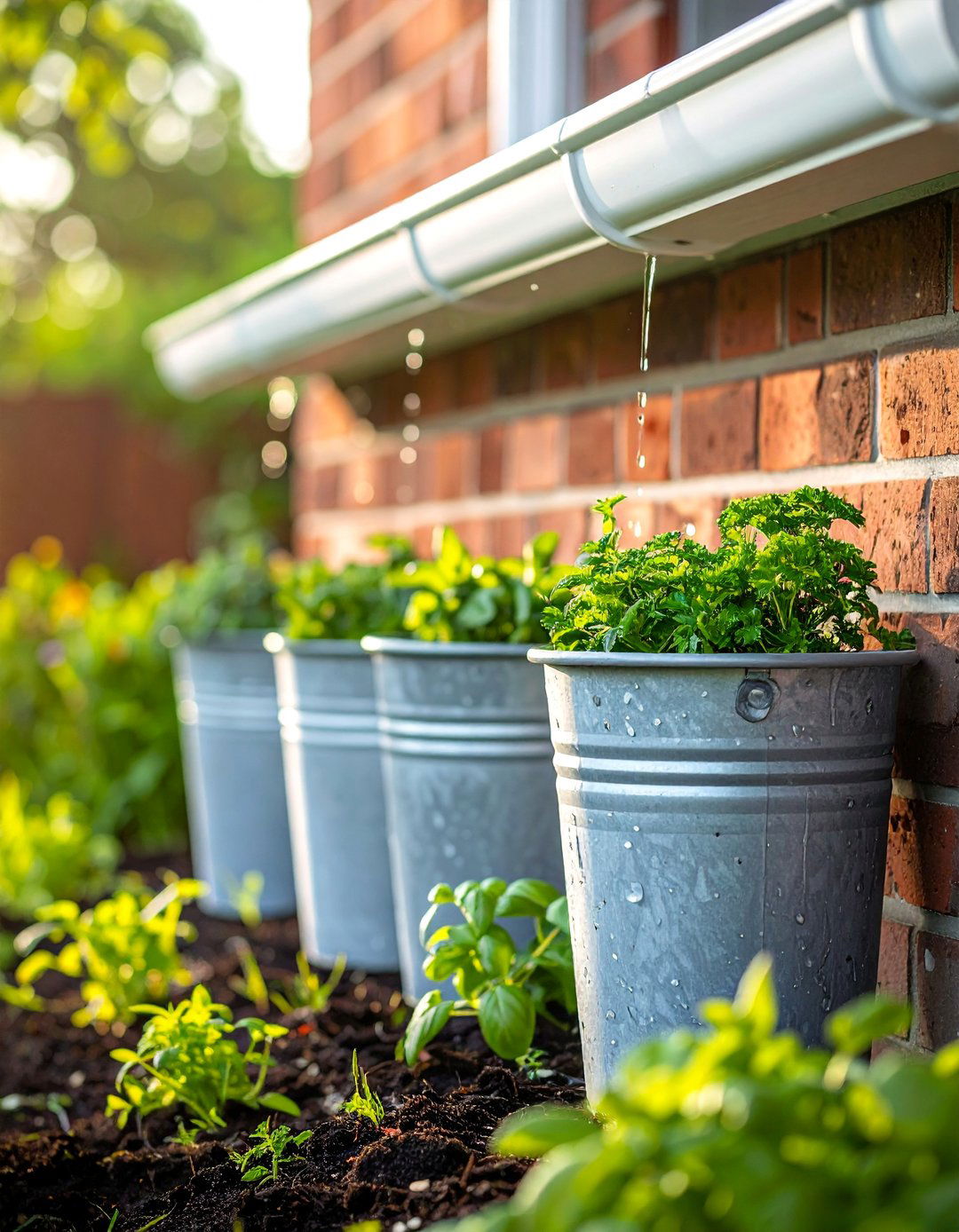
Create an innovative, self-watering system by integrating buckets with a rain gutter. Mount a small section of rain gutter horizontally on a wall or railing, then place several buckets beneath it. Drill small holes in the bottom of the gutter to allow rainwater or water from your hose to drip slowly and evenly into the buckets below. This method provides a gentle, consistent watering system that reduces water waste and ensures your plants receive a steady supply of moisture. It’s a smart and sustainable way to care for your bucket garden while repurposing common household materials for a functional setup.
18. Succulent and Cacti Bucket Arrangement
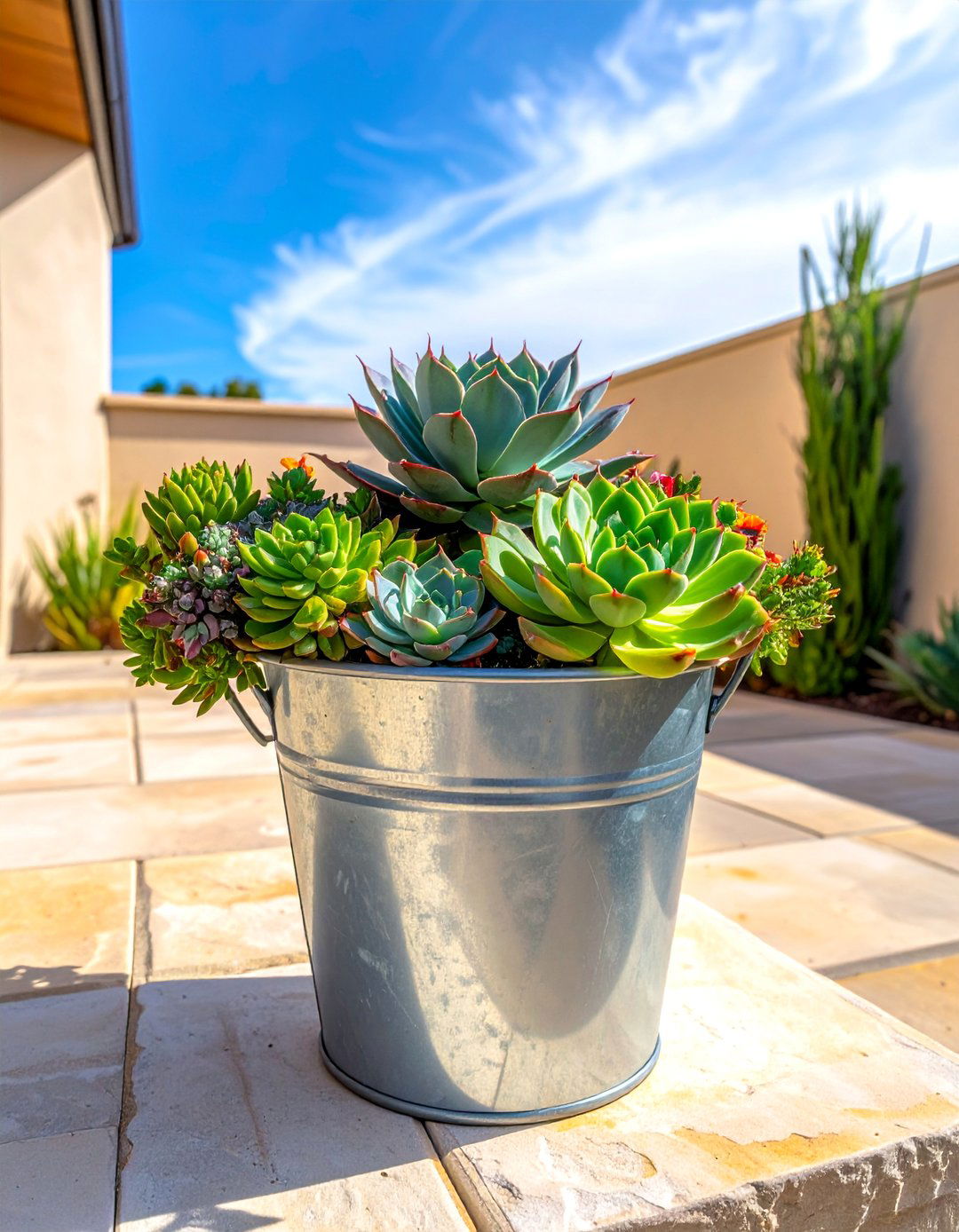
For a low-maintenance and drought-tolerant option, design a stunning succulent and cacti arrangement in a bucket. These plants require minimal watering and thrive in the well-draining environment a bucket can provide. Start by ensuring the bucket has ample drainage holes, then fill it with a specialized cactus and succulent soil mix. Arrange a variety of plants with different shapes, textures, and colors to create a visually interesting composition. This type of bucket garden is perfect for sunny, dry spots on a porch or patio and adds a touch of modern, sculptural beauty with very little effort.
19. Garlic and Onion Growing Bucket
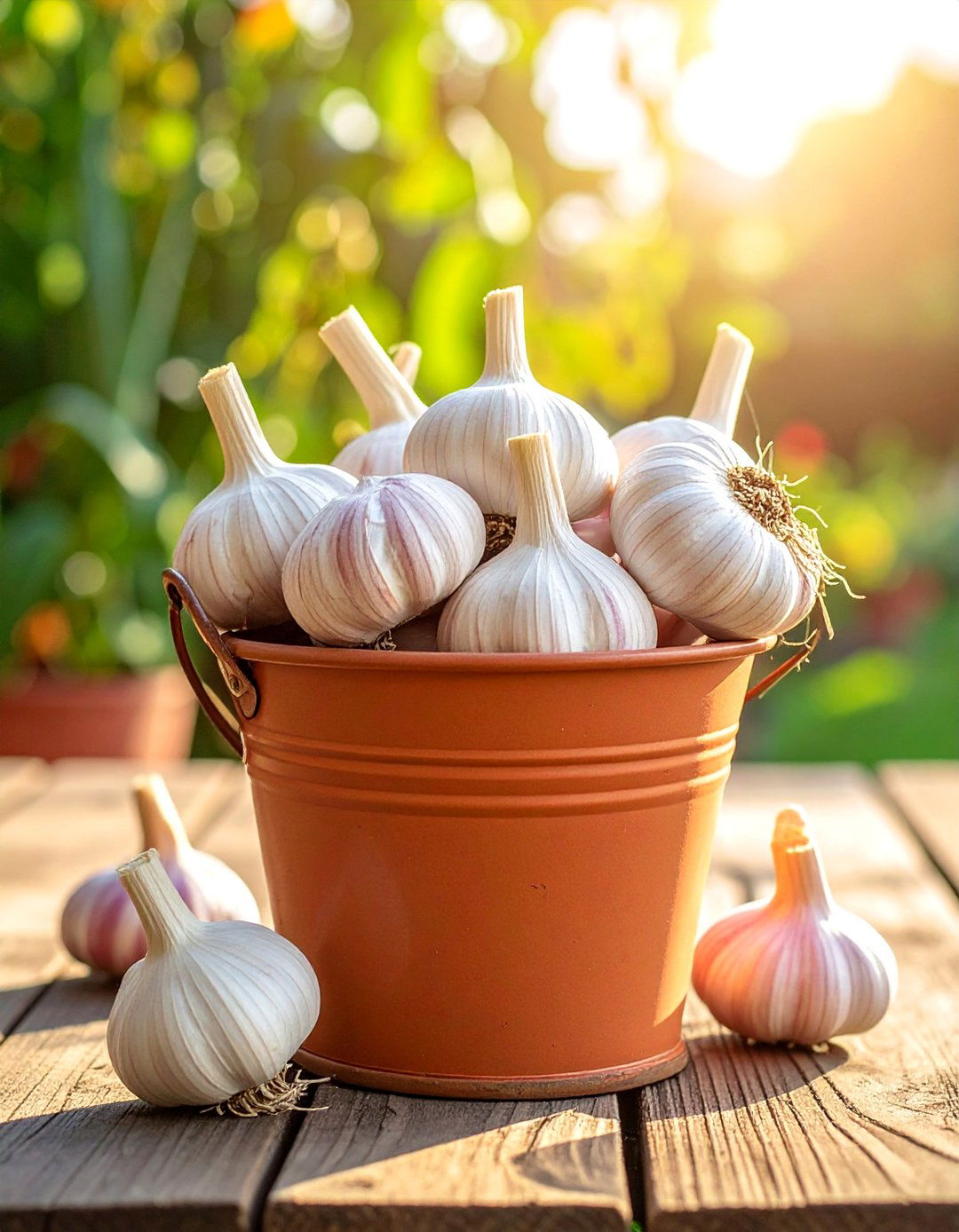
Garlic and onions are surprisingly easy to grow in buckets and don't require much space. A single 5-gallon bucket can accommodate several bulbs, making it a productive use of a small area. Fill the bucket with loose, well-draining soil and plant individual garlic cloves or onion sets a few inches apart. The contained environment helps protect them from soil pests and makes harvesting simple—just tip the bucket over when the tops begin to yellow and die back. This is an efficient way to grow your own alliums for a year-round supply of essential kitchen flavorings.
20. Privacy Screen Bucket Garden with Tall Plants
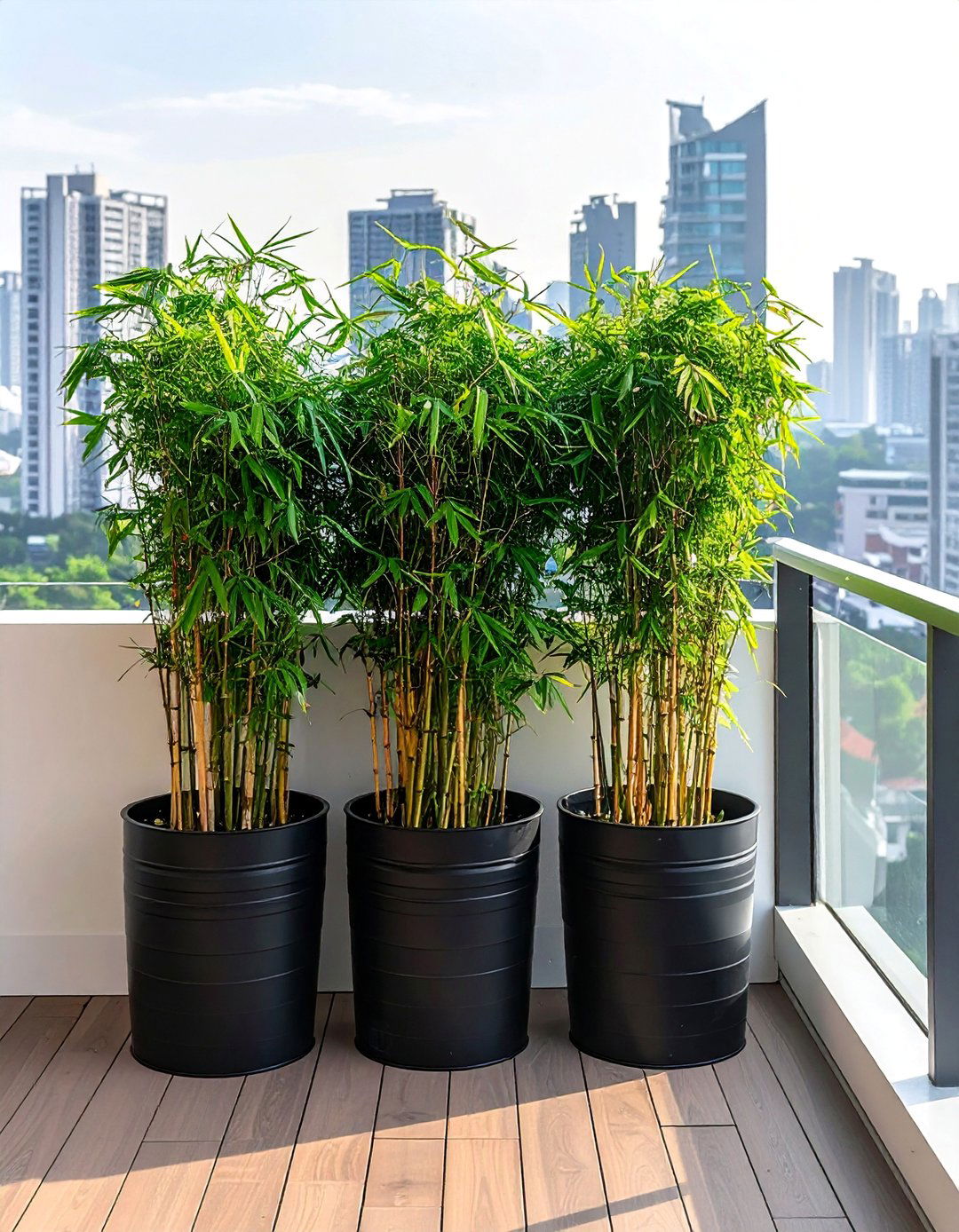
Create a natural and beautiful privacy screen on your balcony or patio by strategically arranging buckets with tall plants. Use large 5-gallon buckets to plant ornamental grasses, bamboo, or tall flowering plants like sunflowers or canna lilies. Placing several of these buckets in a row can effectively block views and create a more secluded, intimate outdoor space. This living wall not only enhances privacy but also adds lush greenery, texture, and color to your surroundings. It is a functional and aesthetically pleasing solution for defining spaces and adding a sense of enclosure to open areas.
Conclusion:
Bucket gardening offers an incredibly versatile and accessible way to cultivate a garden in nearly any location. From vertical towers of herbs and cascading flowers to productive mini-plots of potatoes and tomatoes, these ideas demonstrate that limited space is no barrier to a bountiful harvest. By repurposing simple containers, gardeners can enjoy fresh produce, beautiful blooms, and a deeper connection to their food. These creative solutions empower anyone to transform a small patio, balcony, or windowsill into a thriving, personalized green oasis, proving that great gardens can come in small containers.

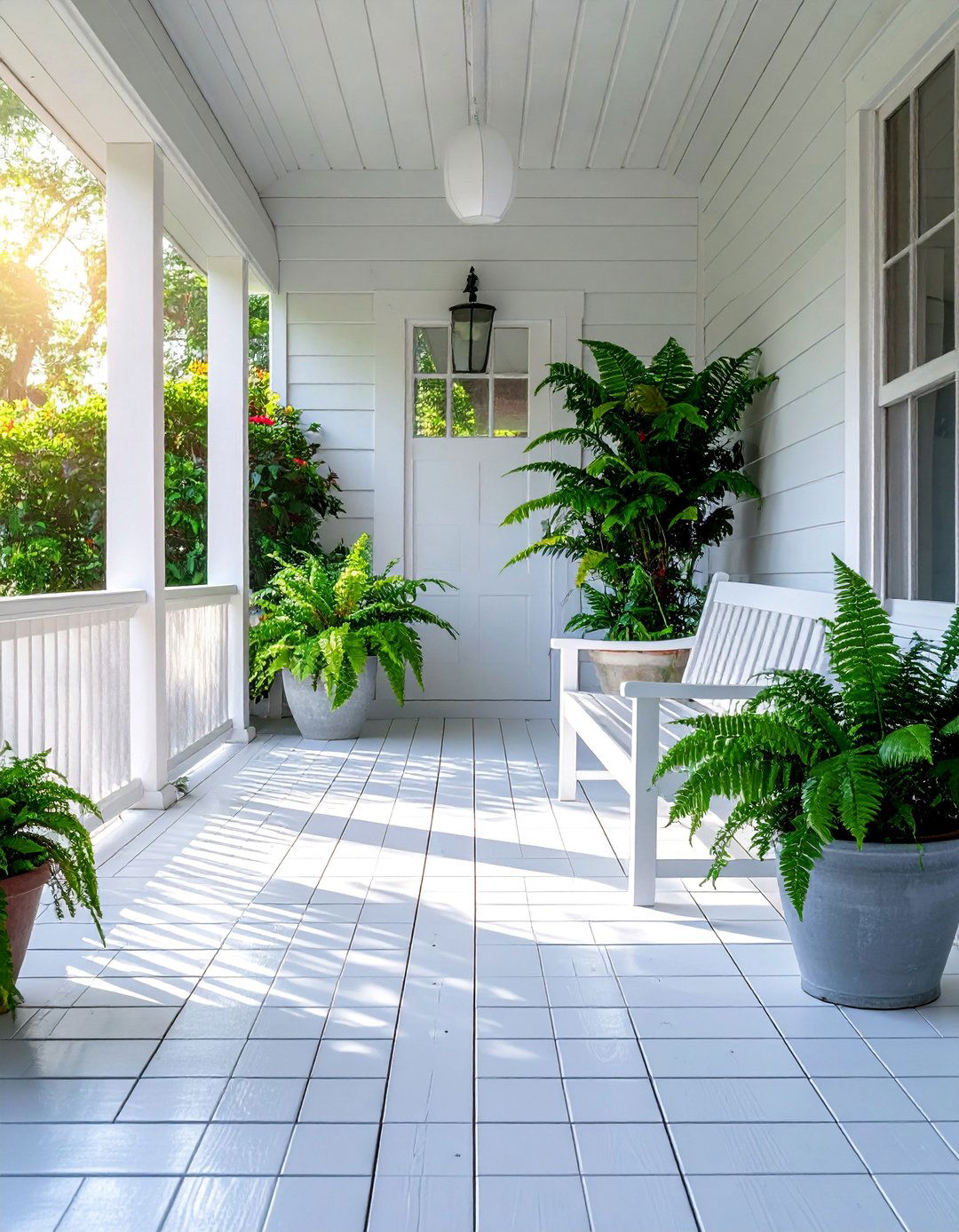
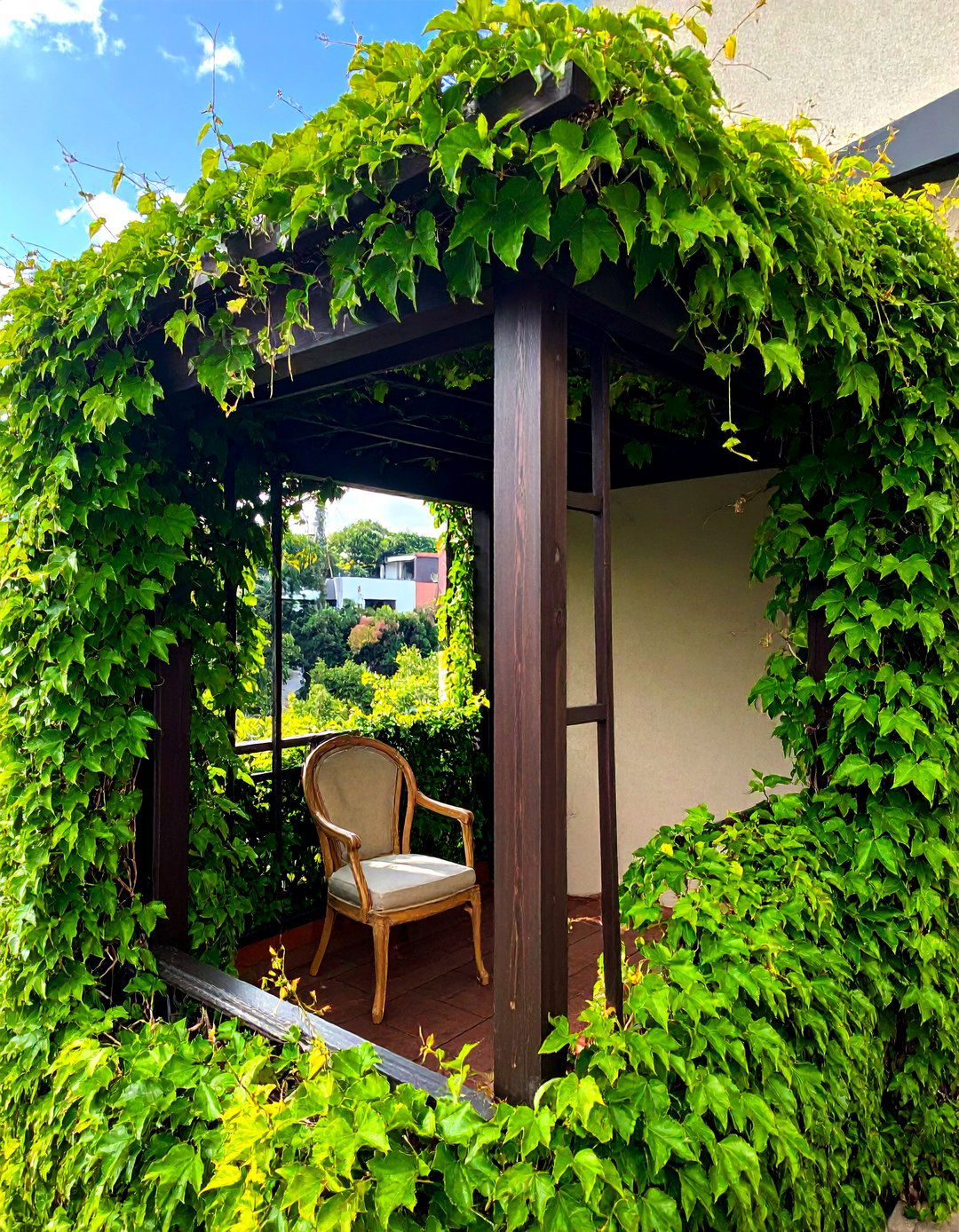
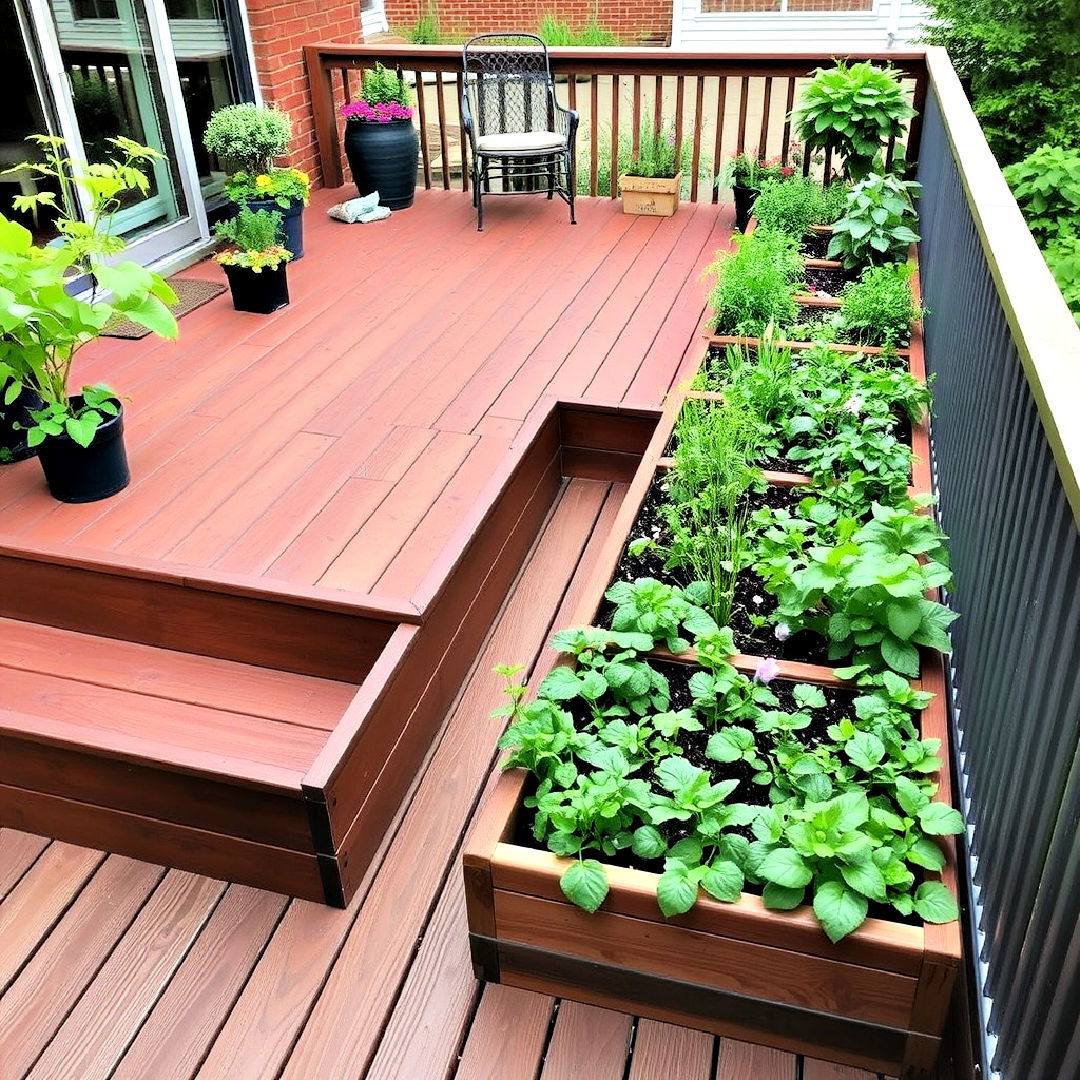
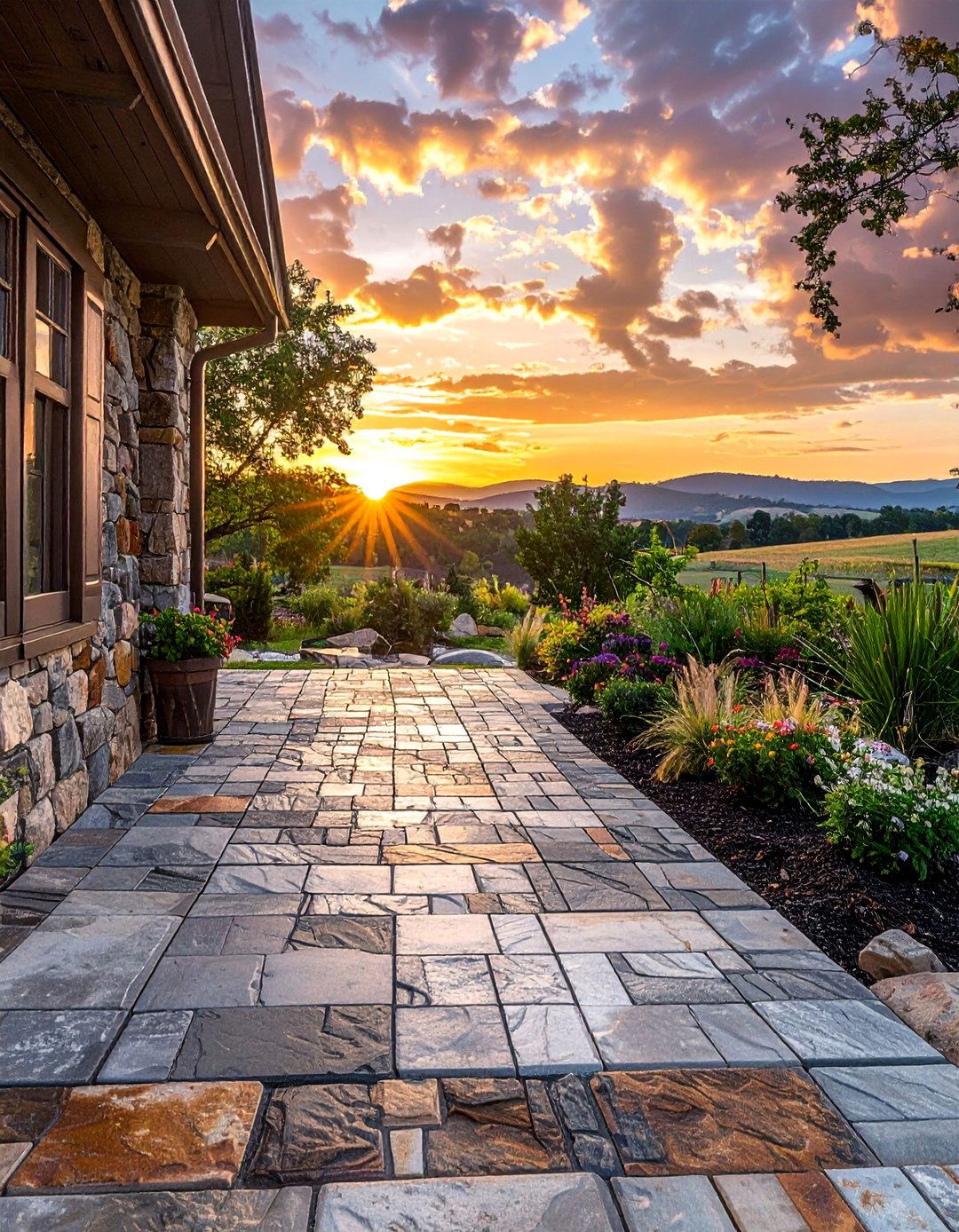

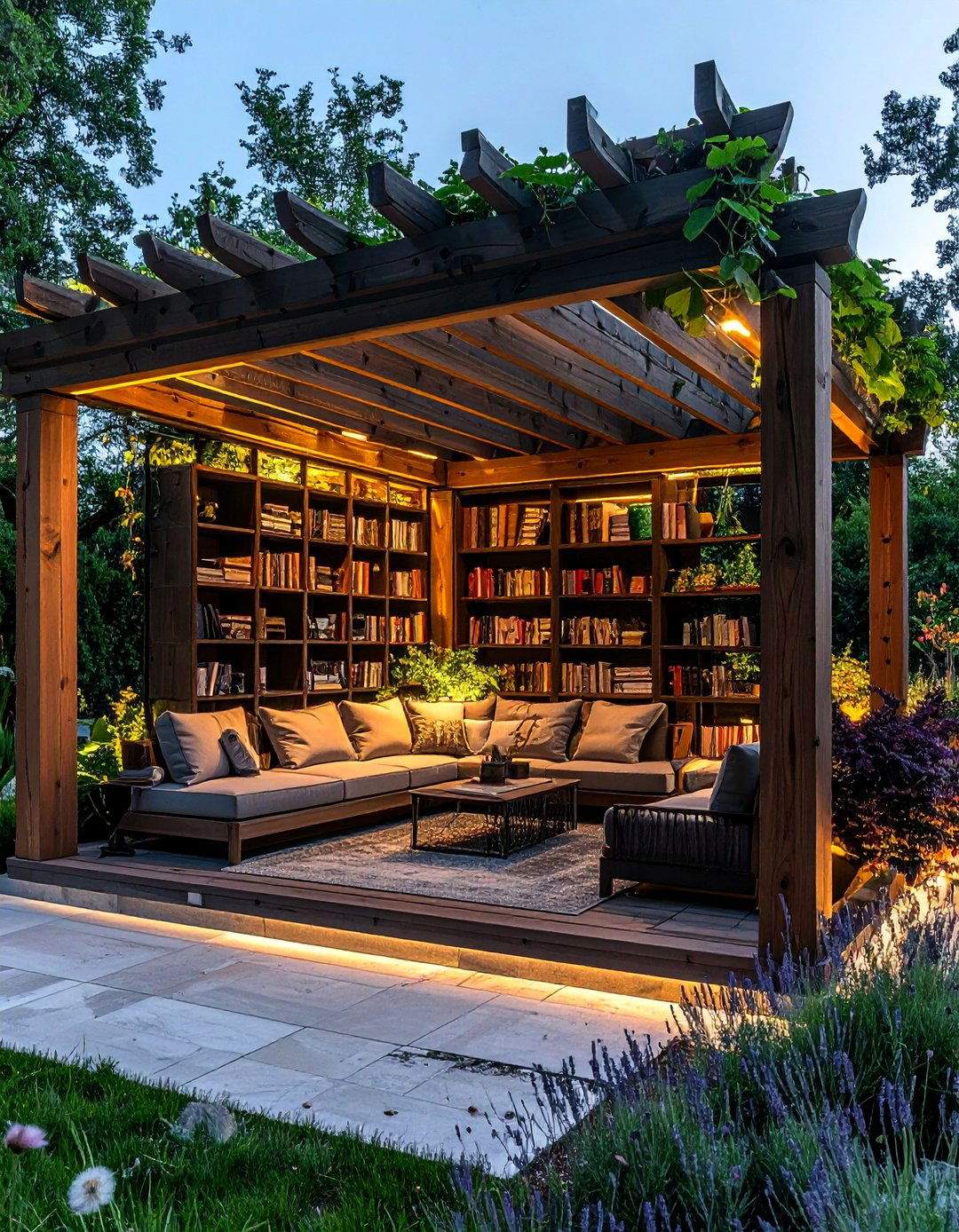

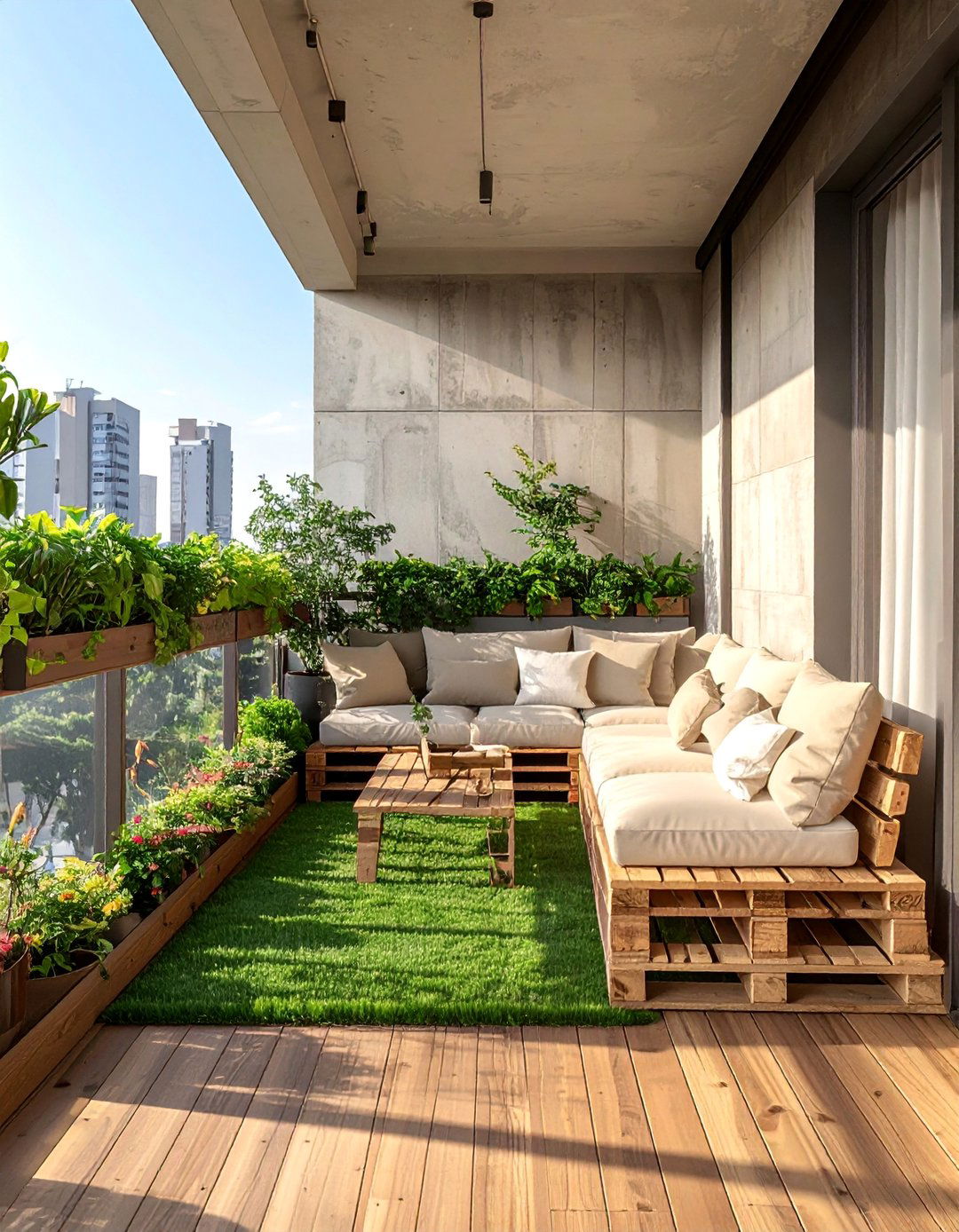
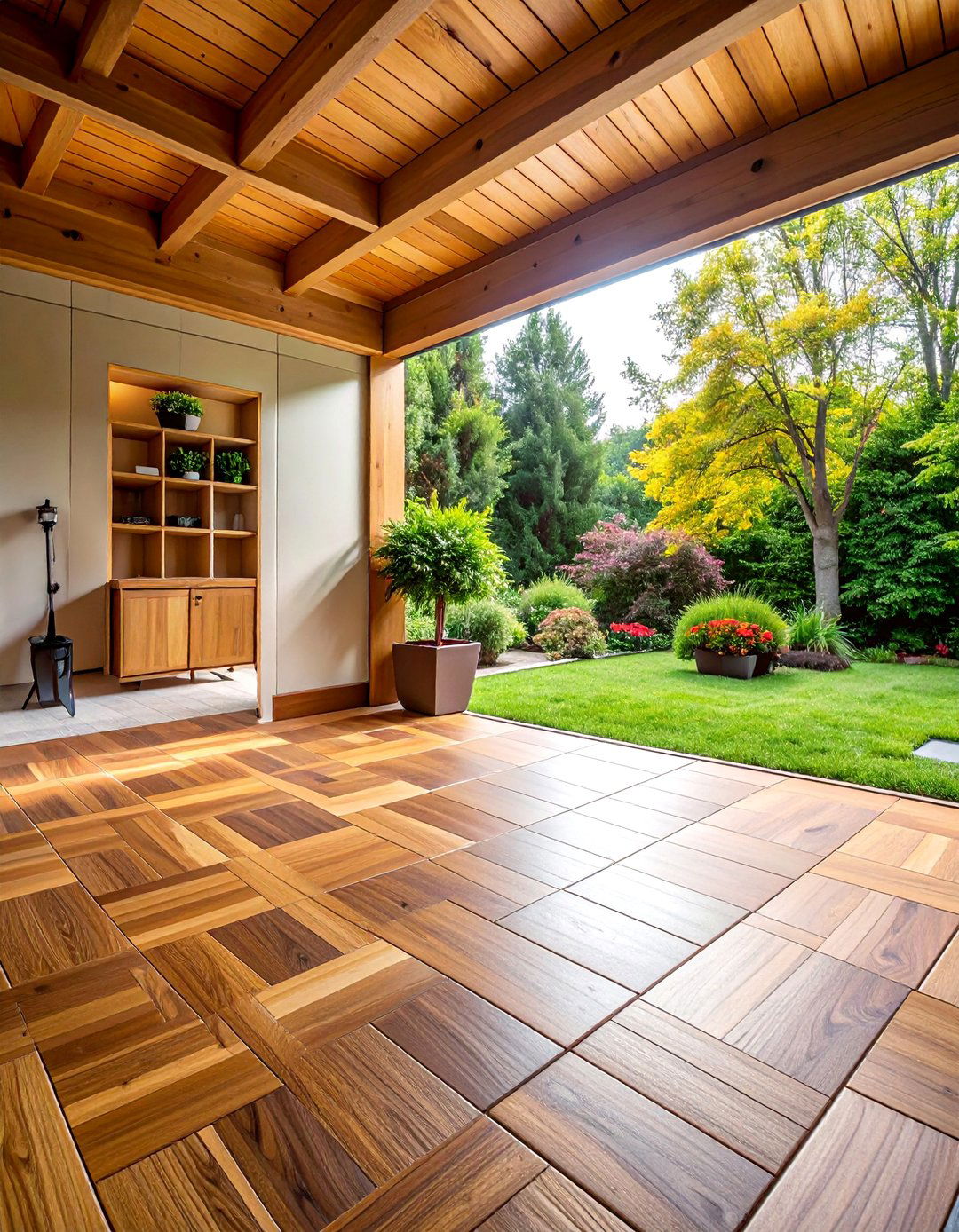
Leave a Reply